Live Events * Portrait Photography* PHOTO ART
Photography
All photos shot on Canon 60D or Panasonic Lumix GH5. Edited in Lightroom and Photoshop.
Behind the Scenes
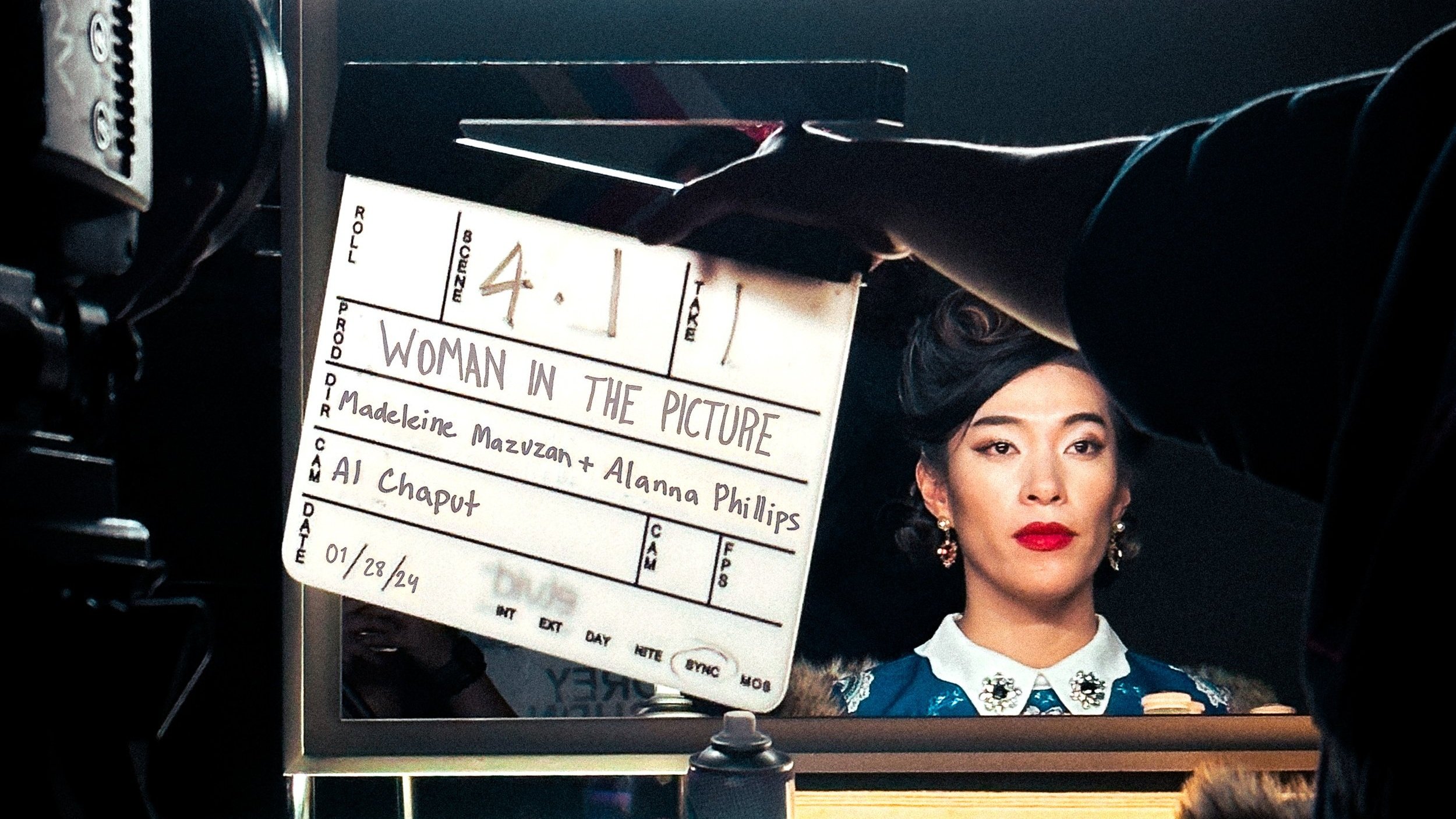
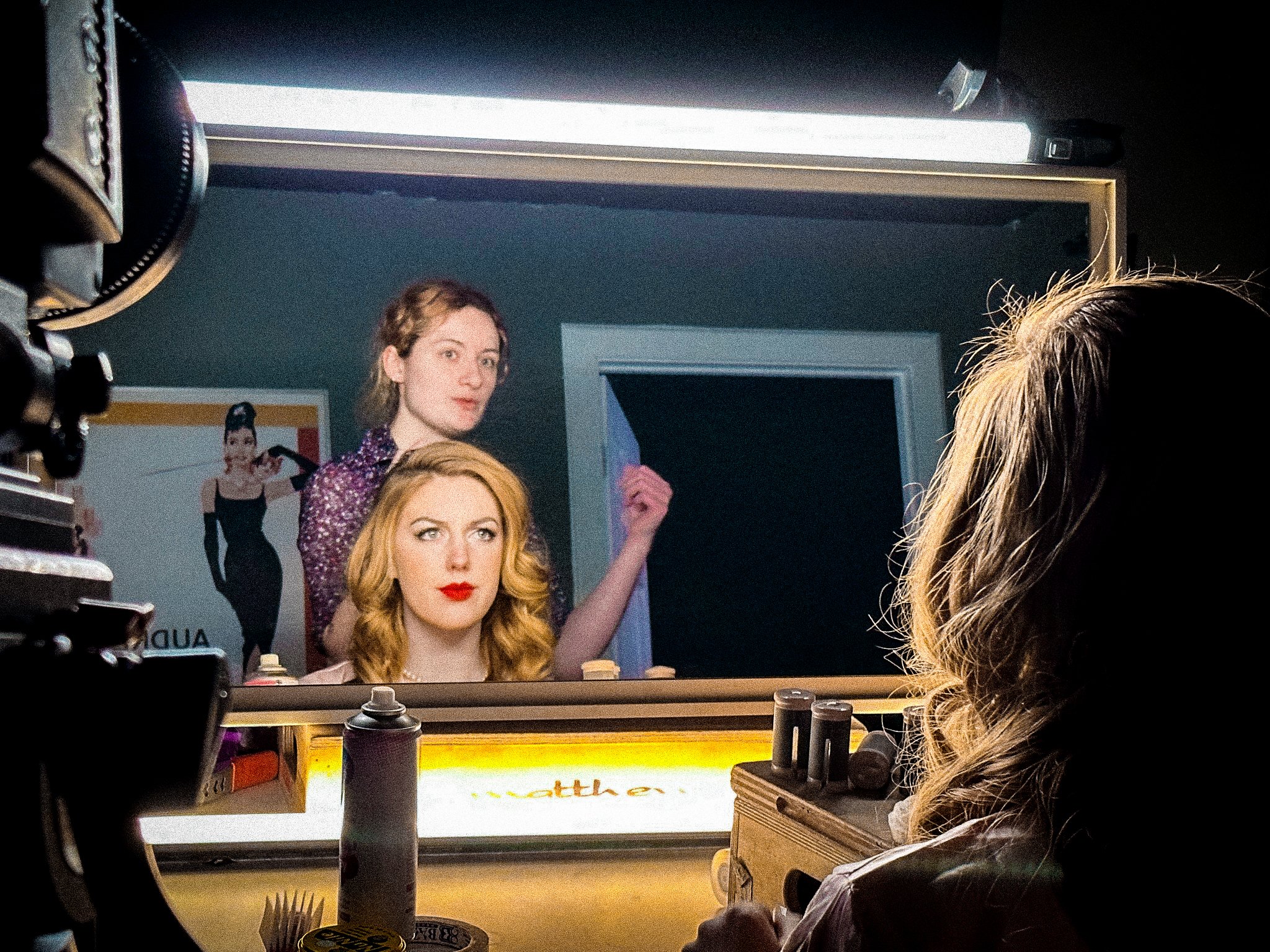
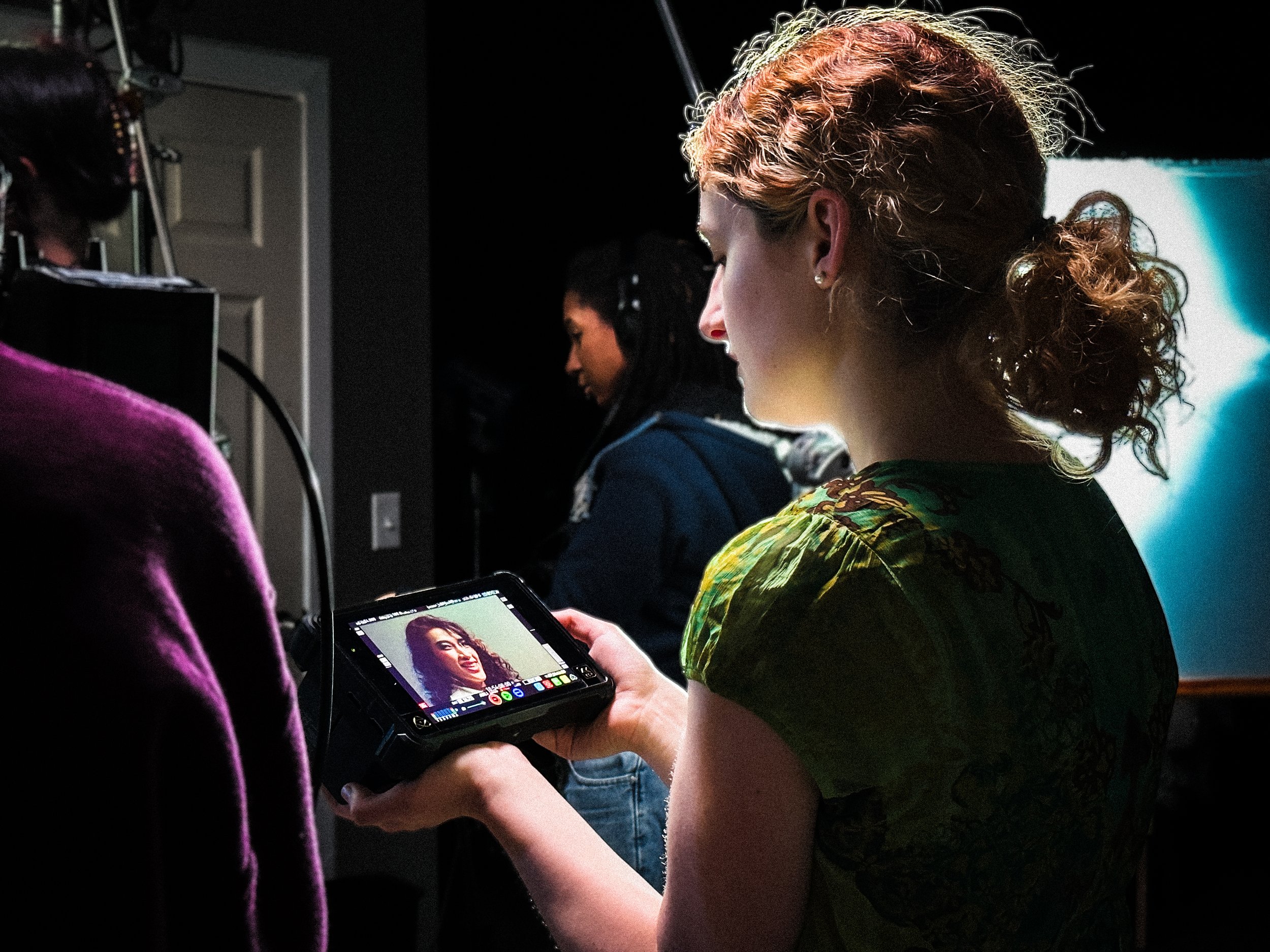
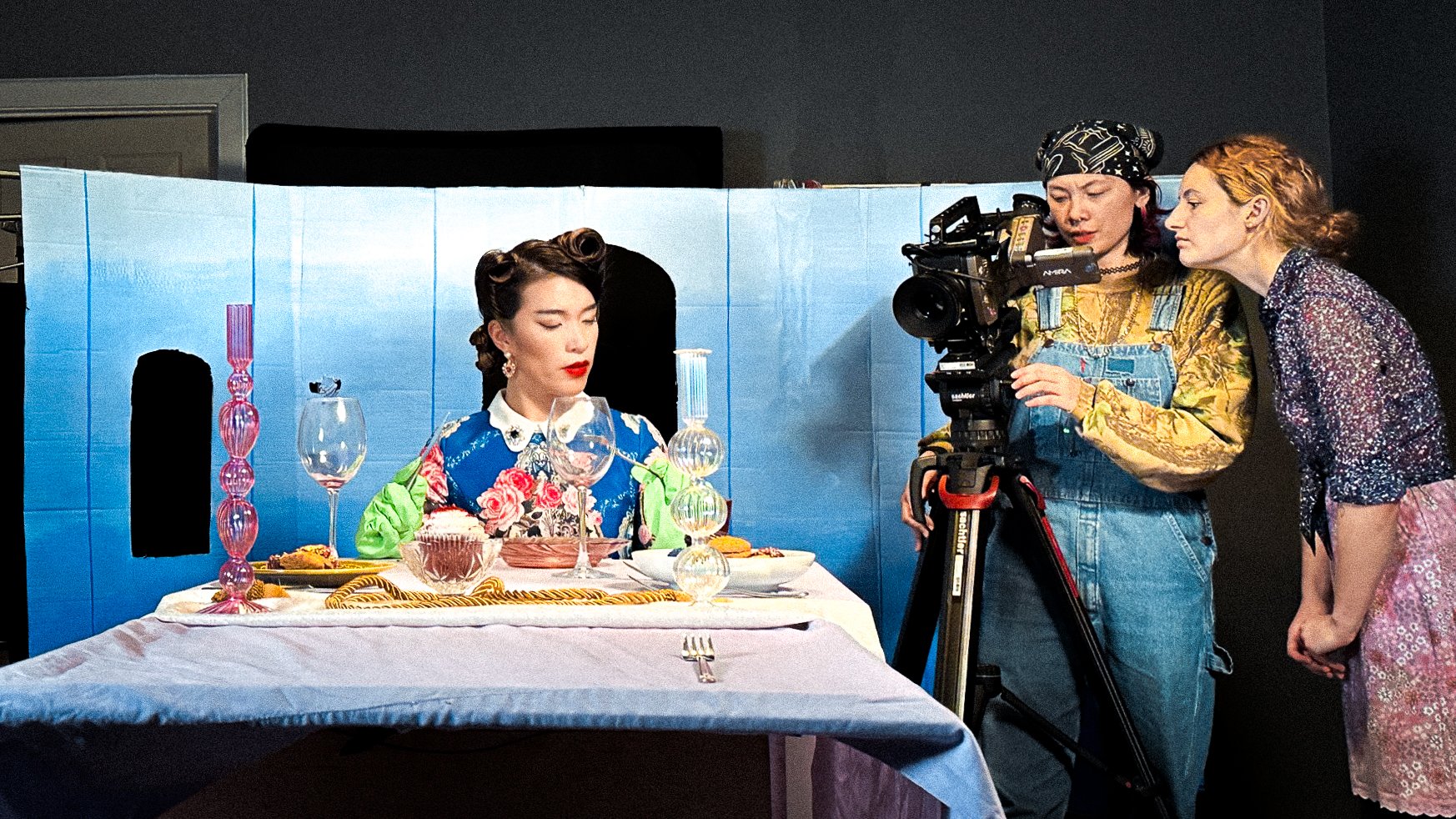
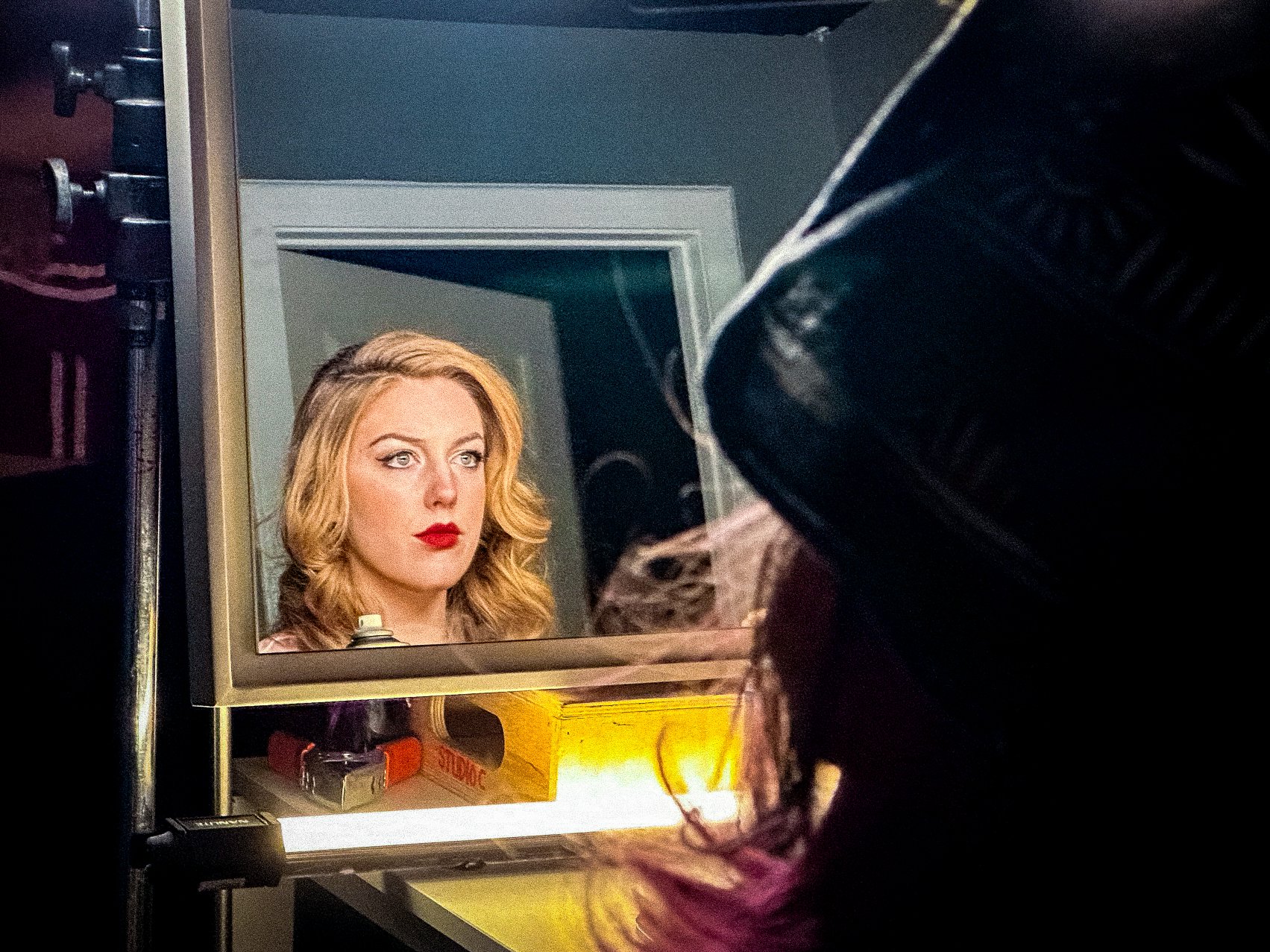
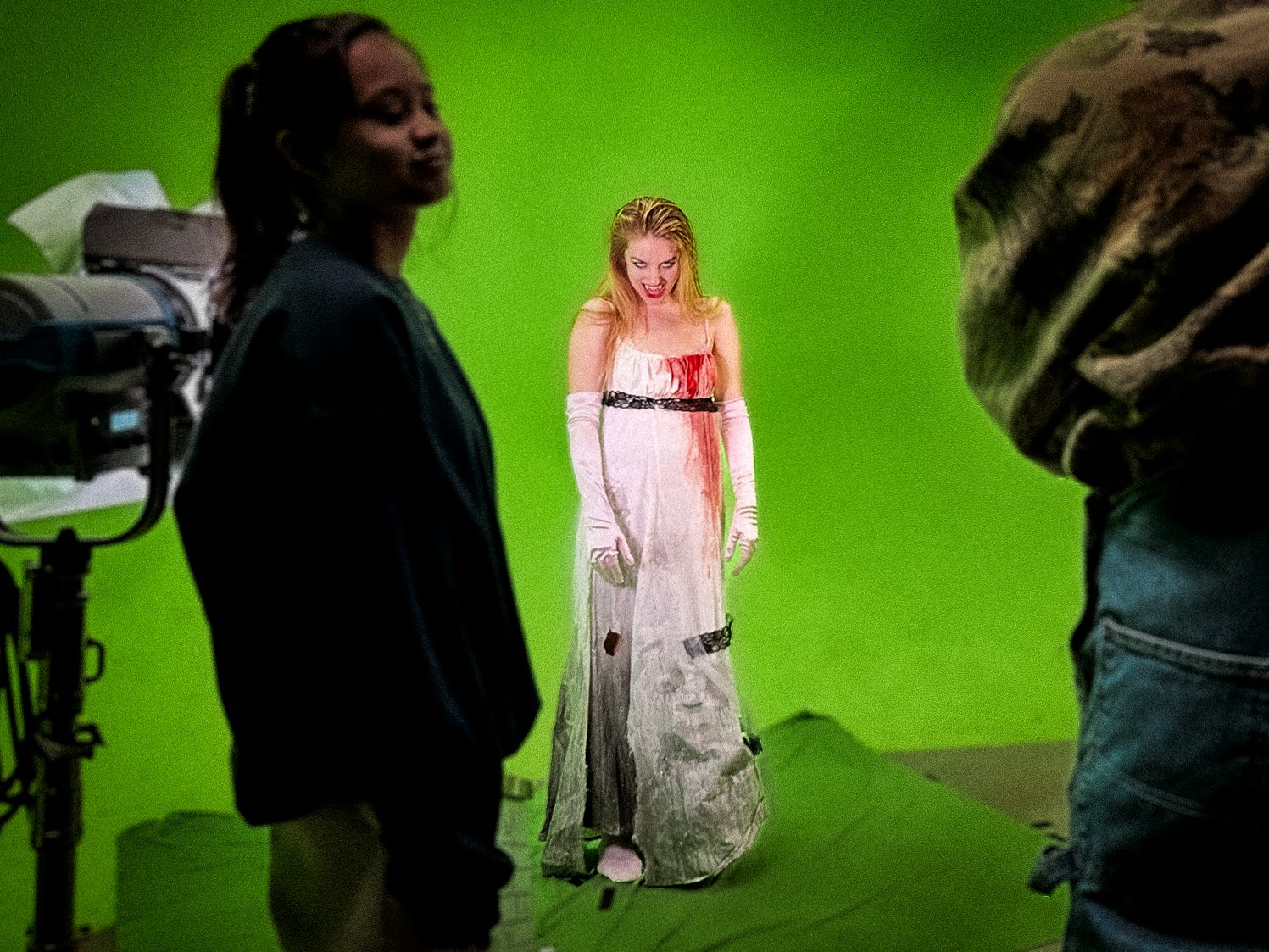






Professional PortraitS

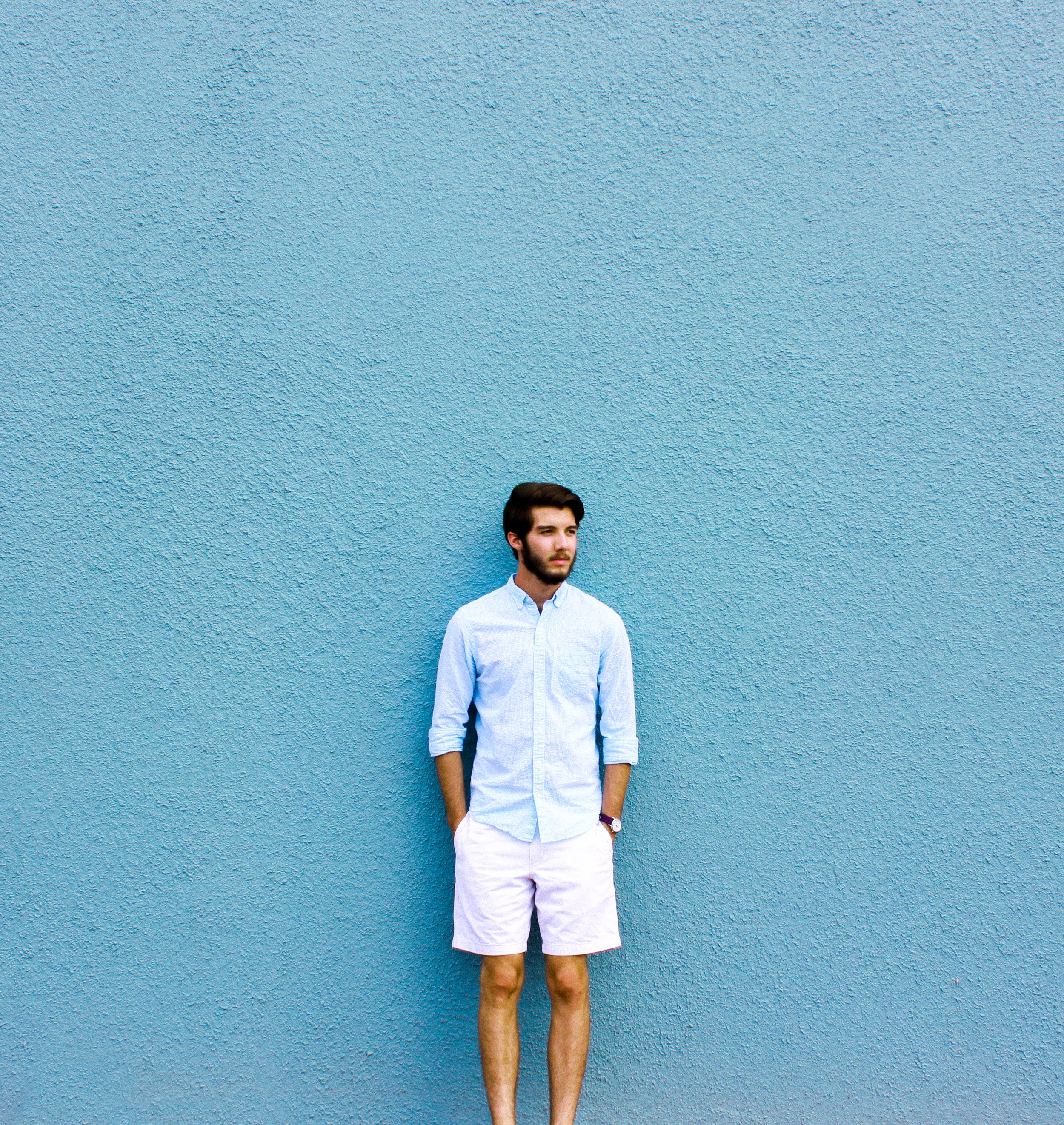
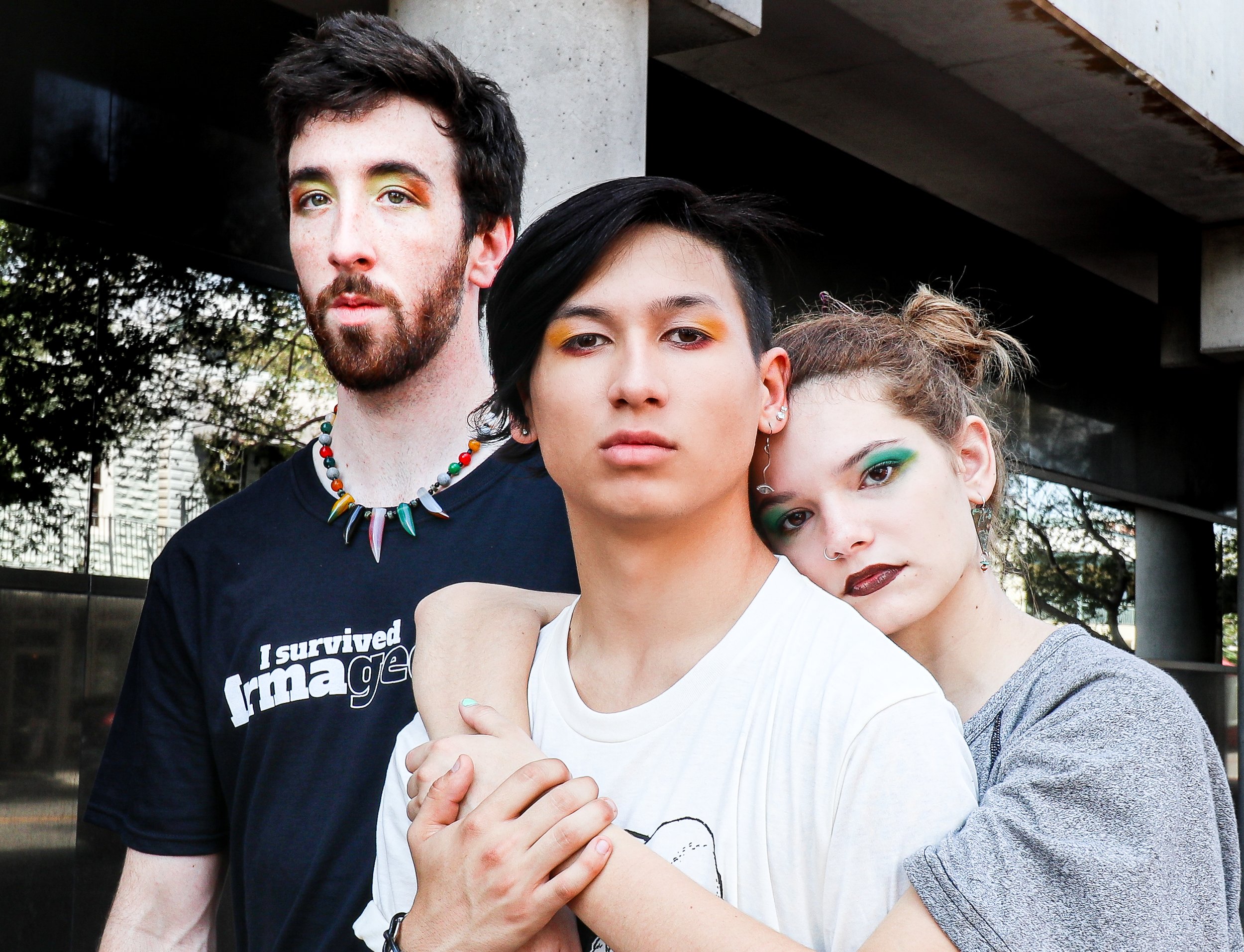
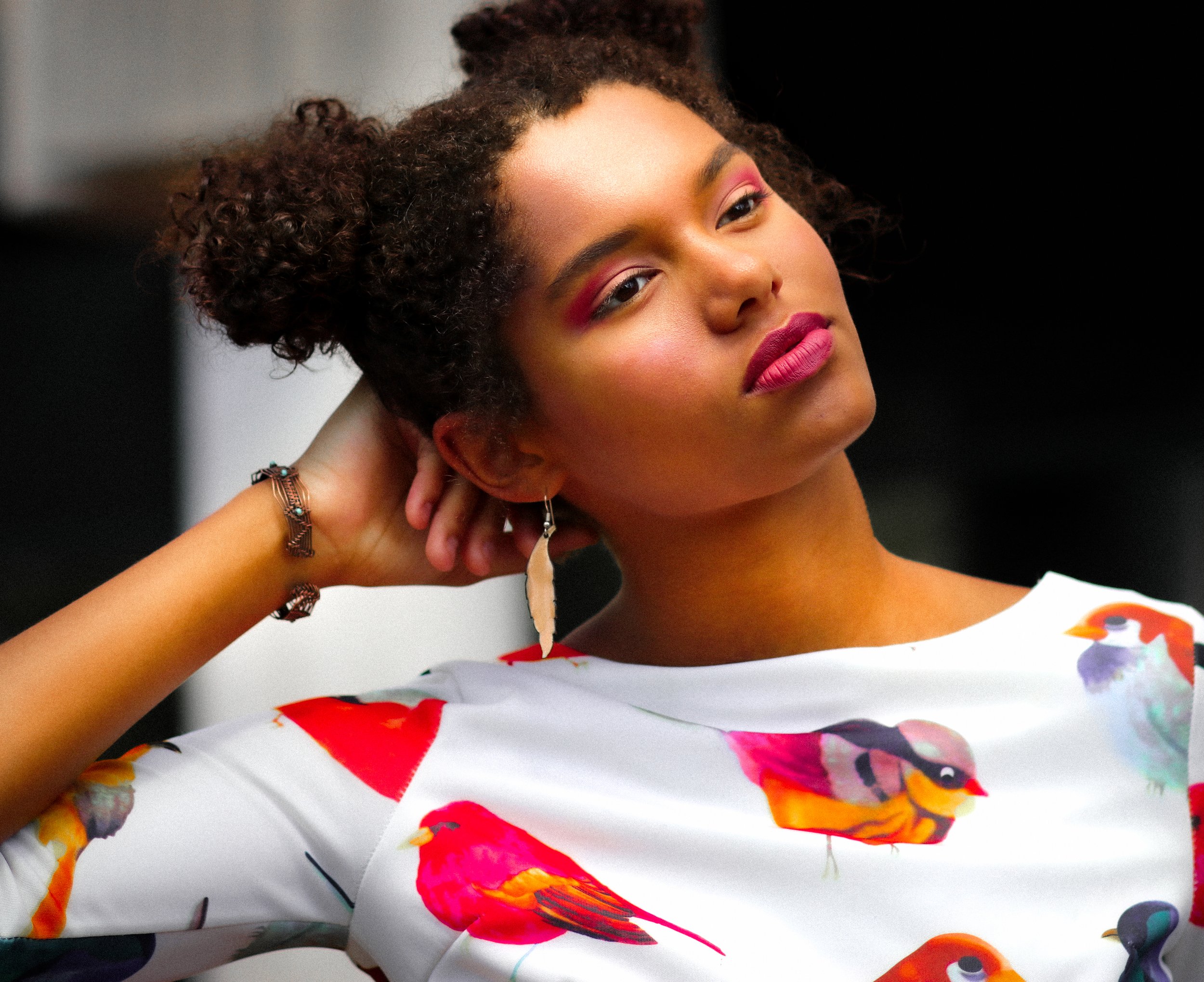
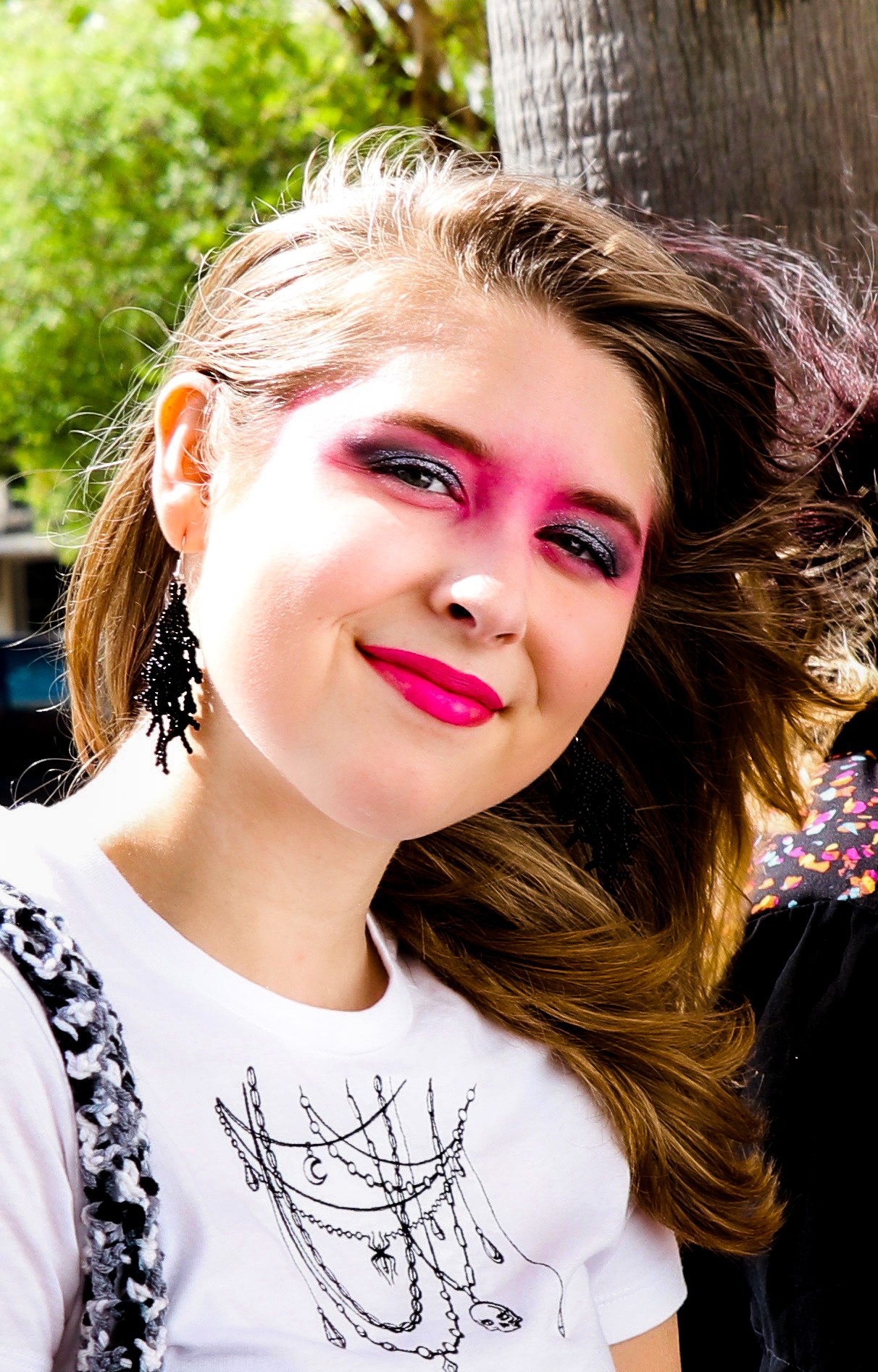
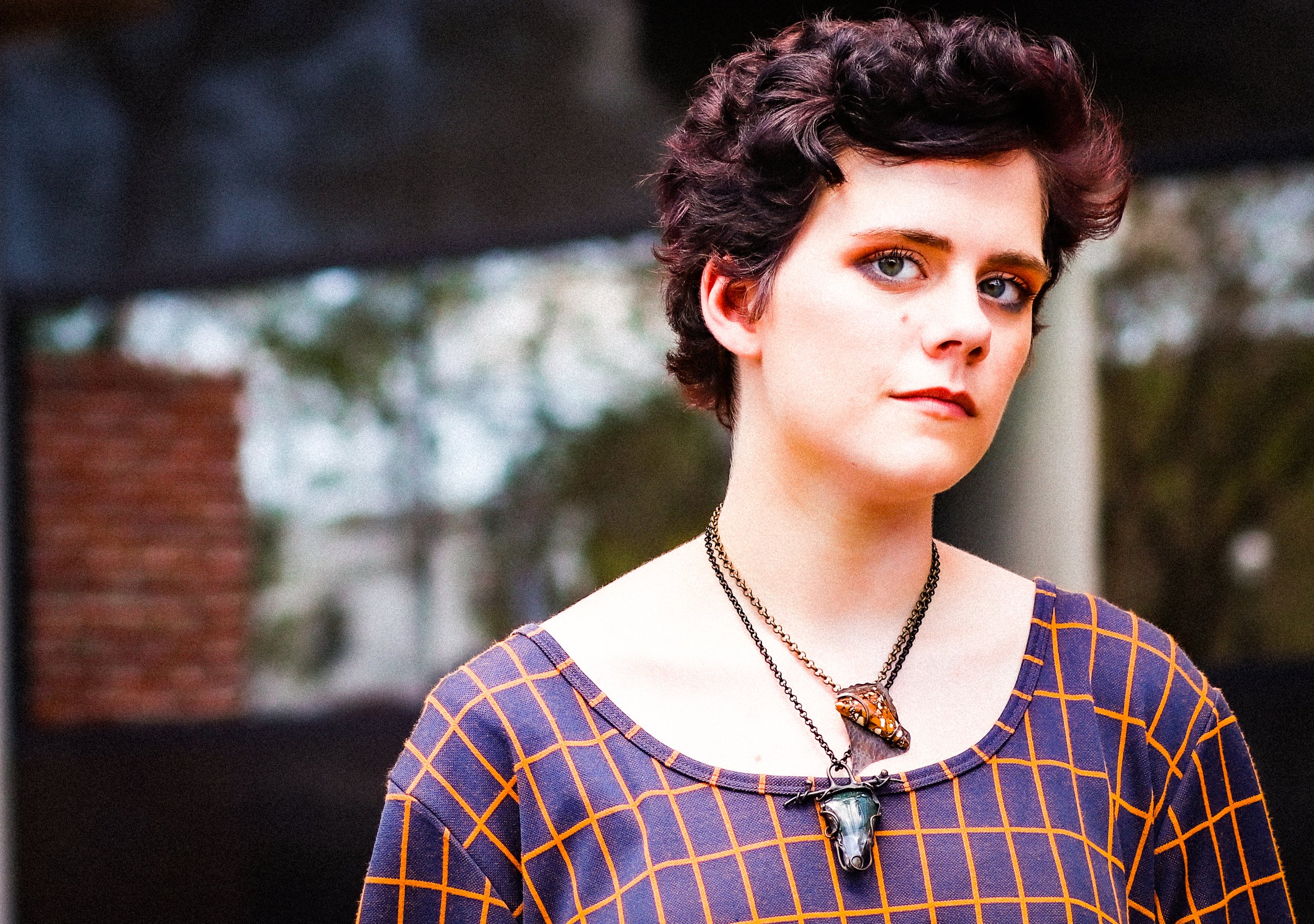






Live Event Coverage
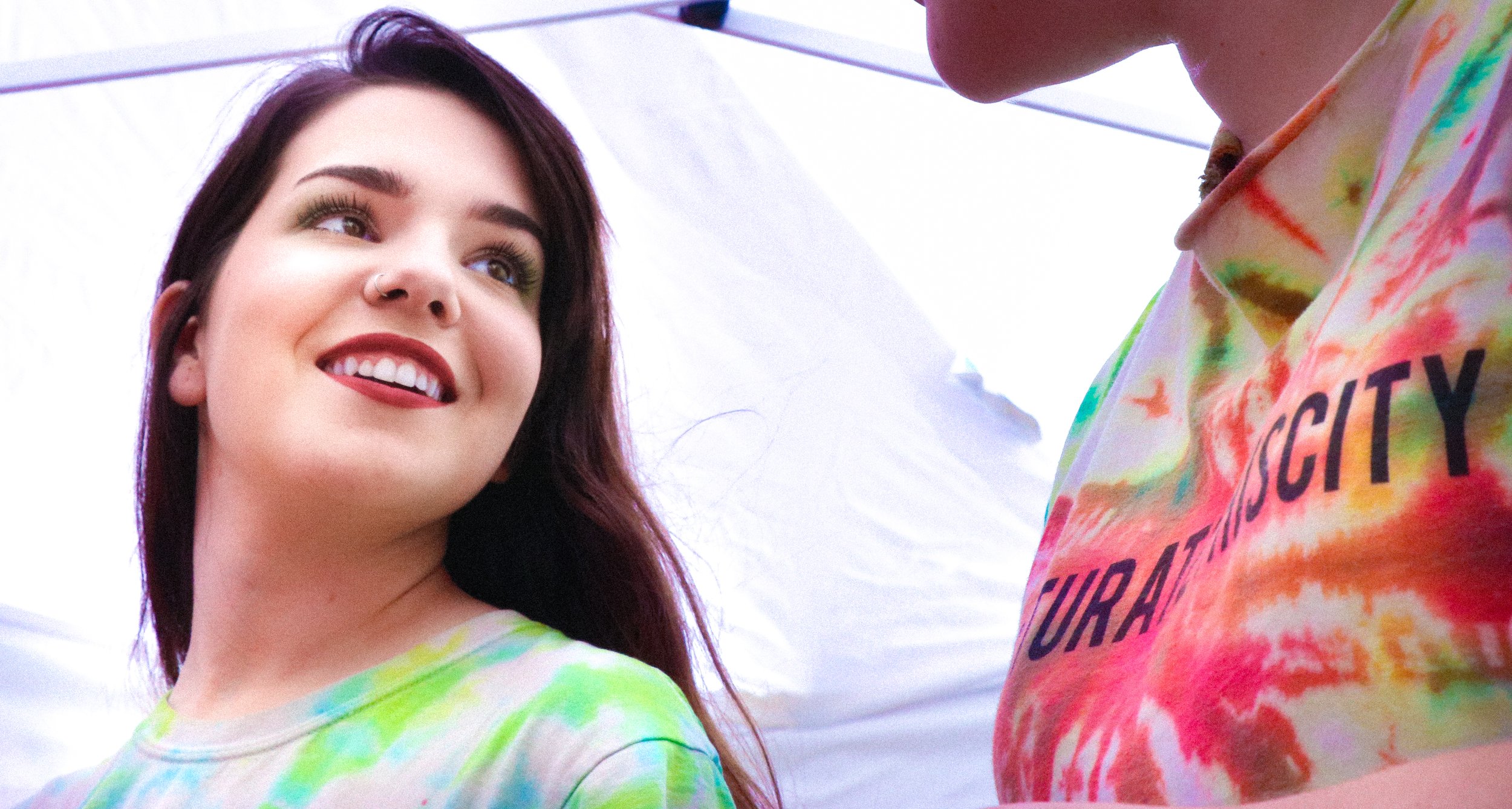
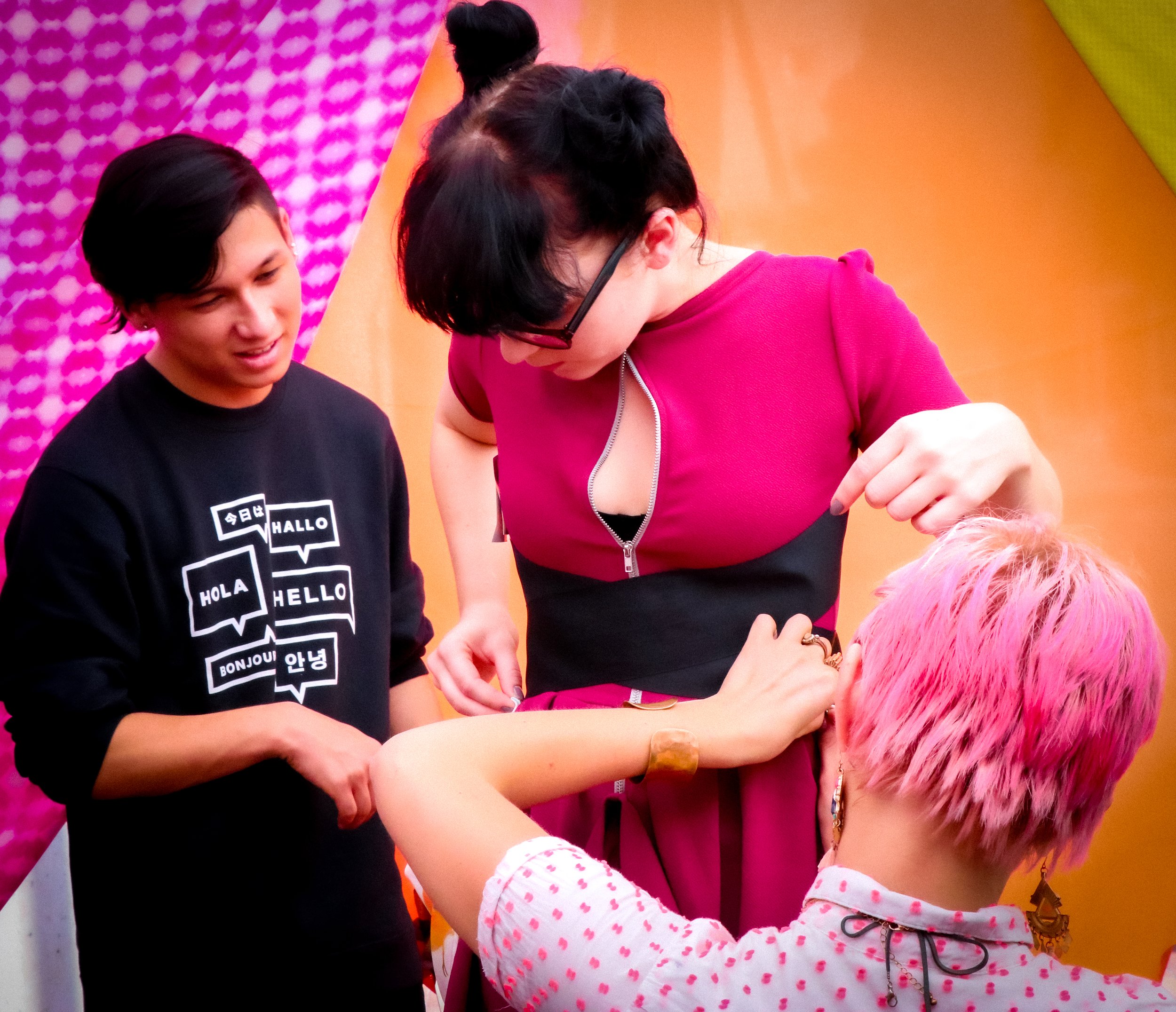
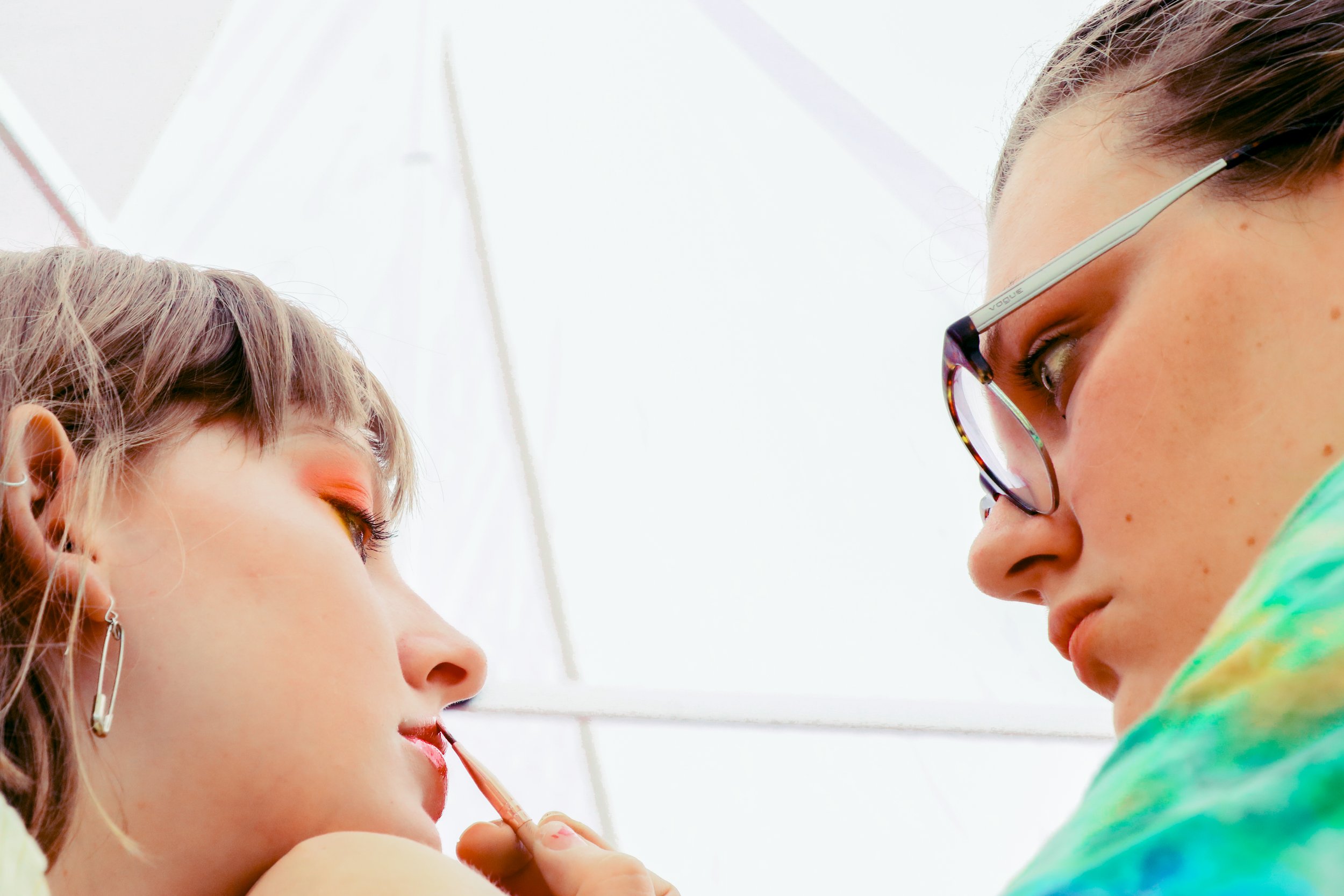
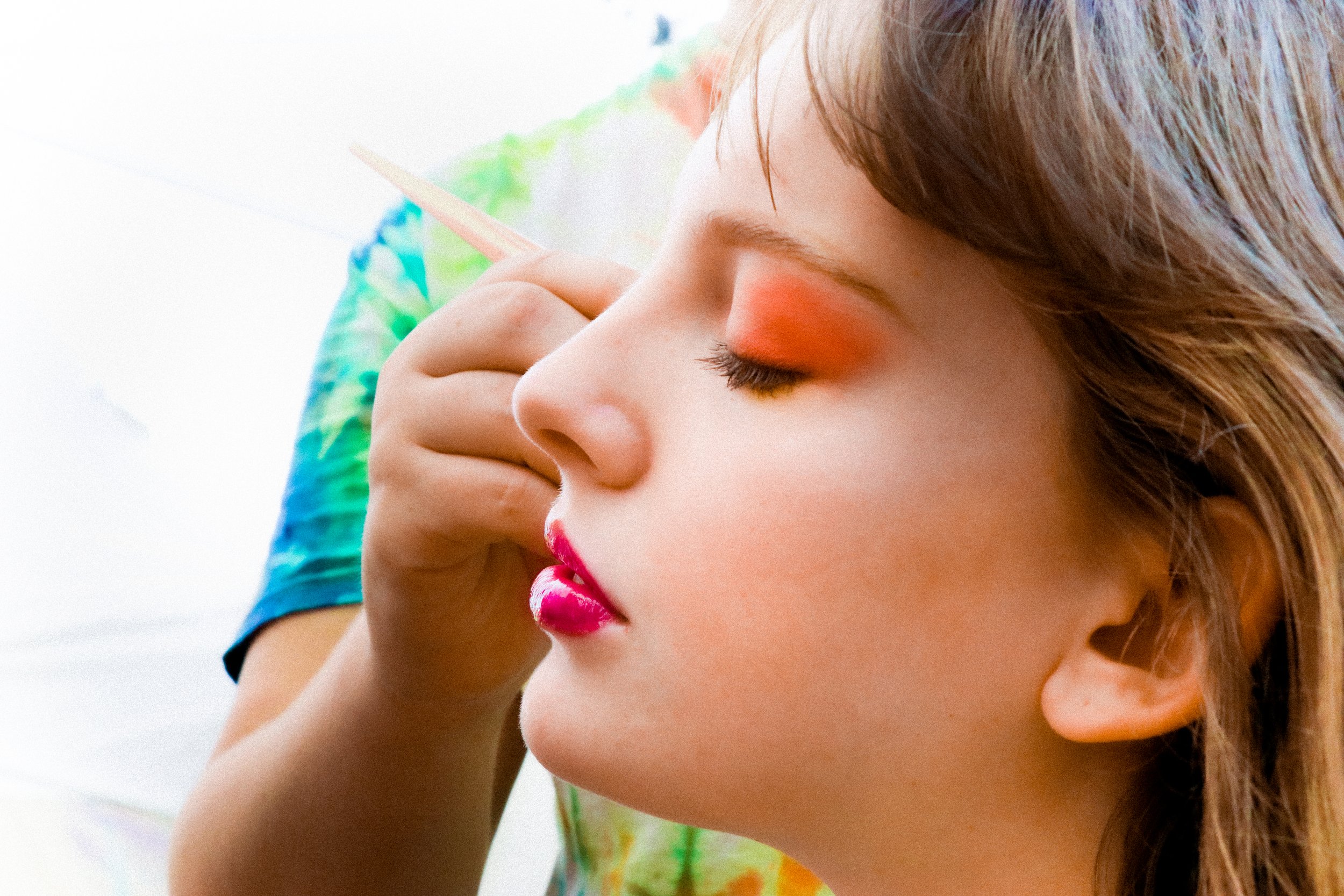
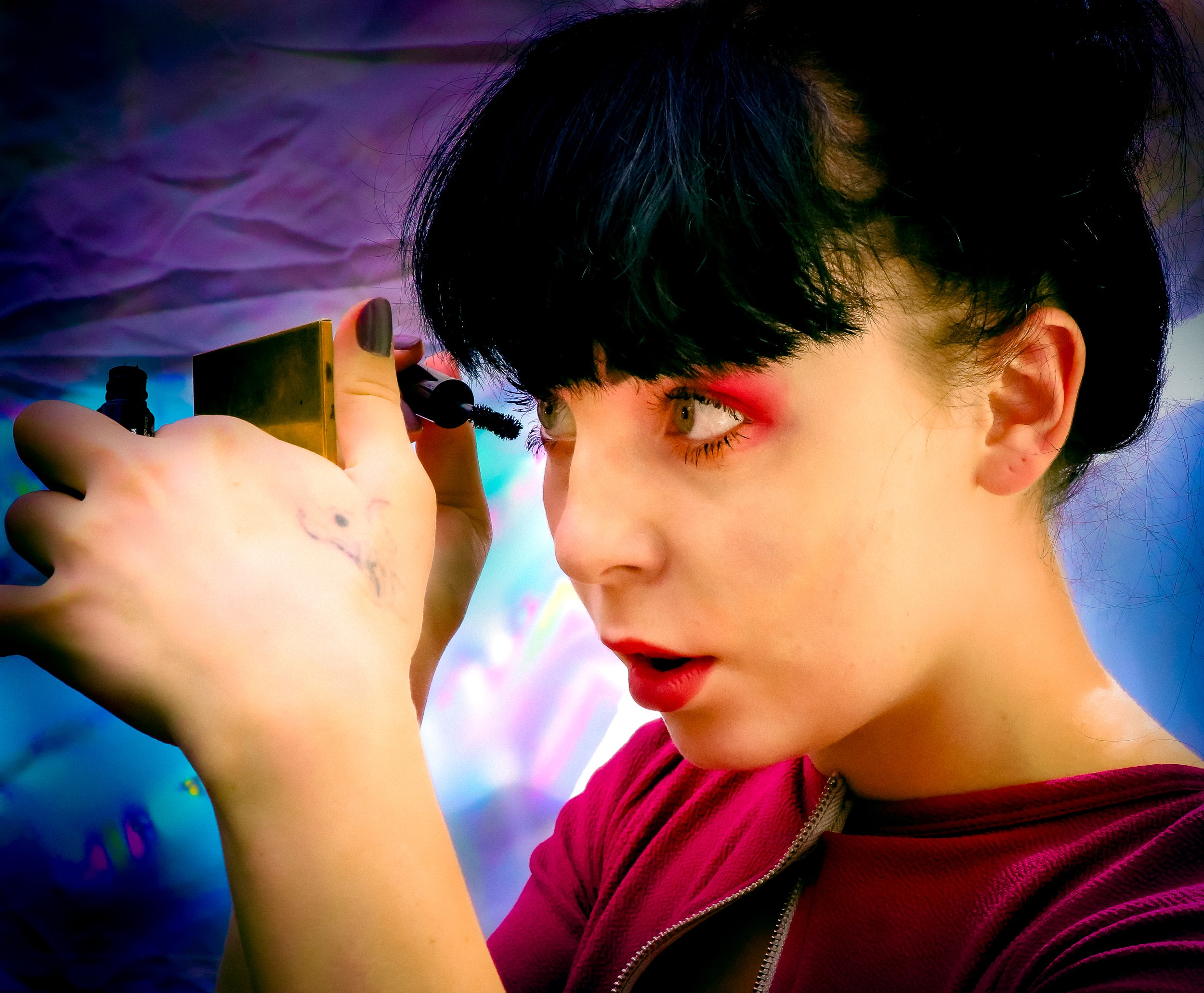

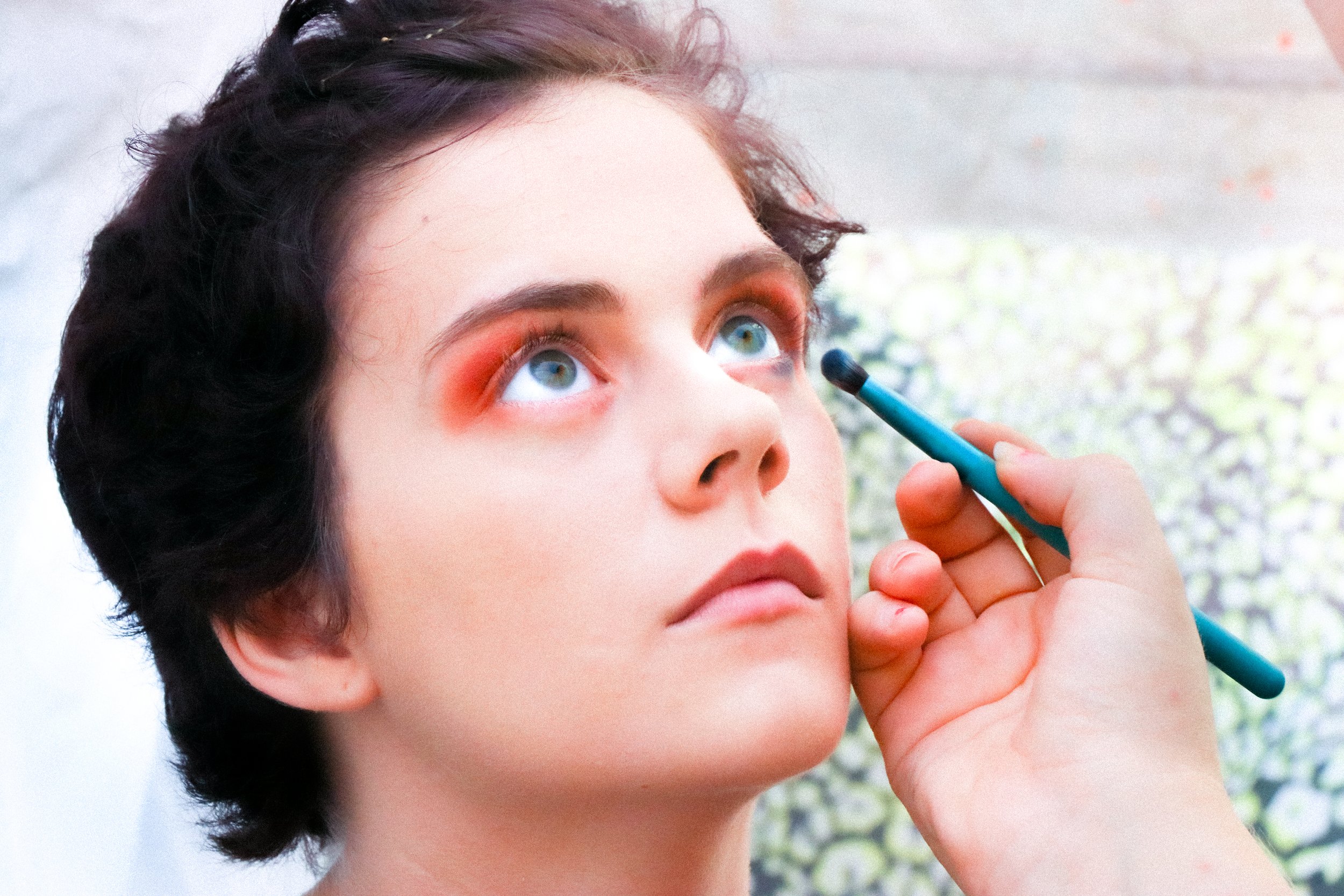







Pet Photography


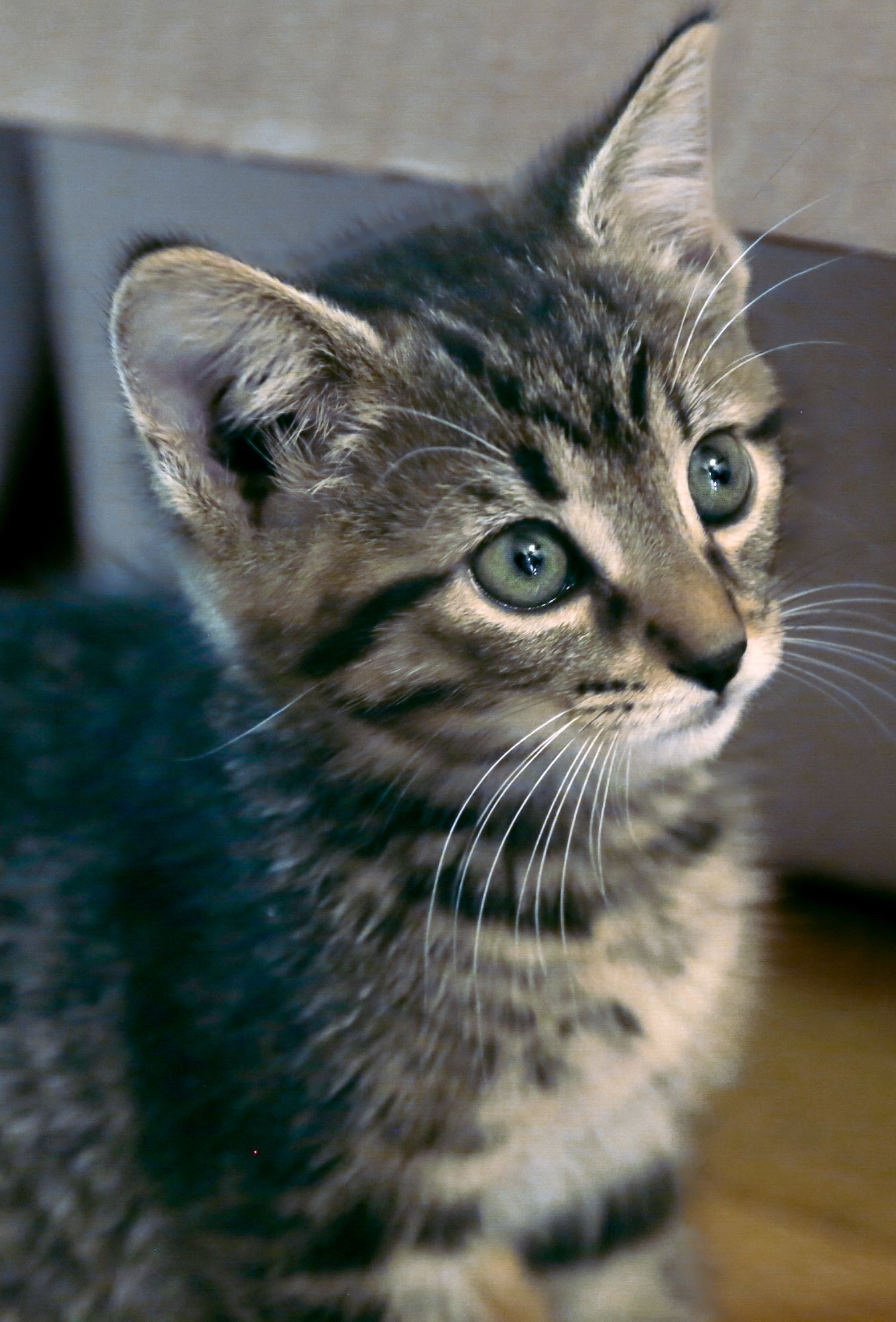
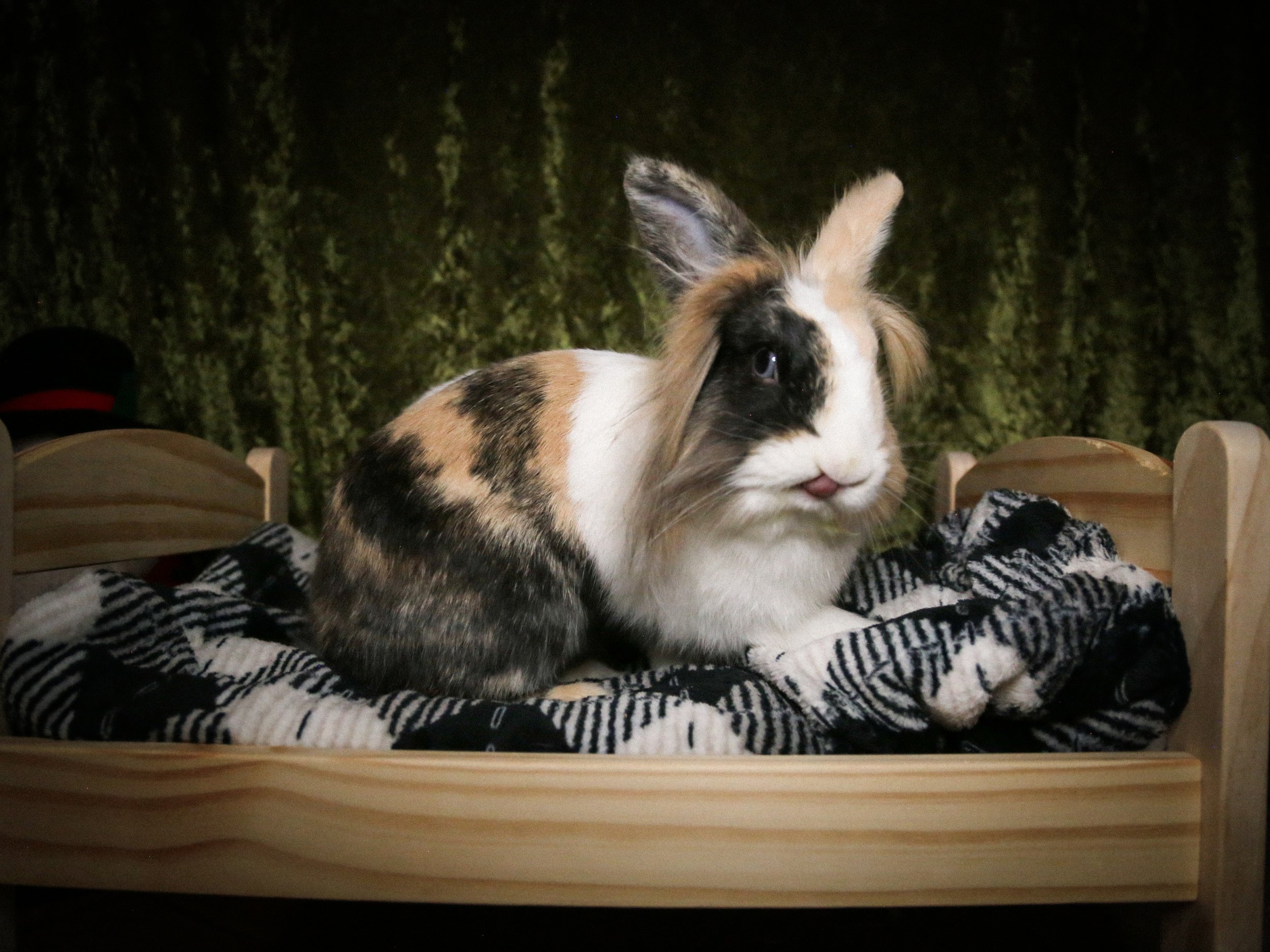






Keeping Busy (2020)
(Digital Photo Series)
Created during the COVID-19 pandemic, the artist uses physical objects and landscapes to convey the virtual nature of connection and the firestorm of emotions that came with isolation and lockdown.
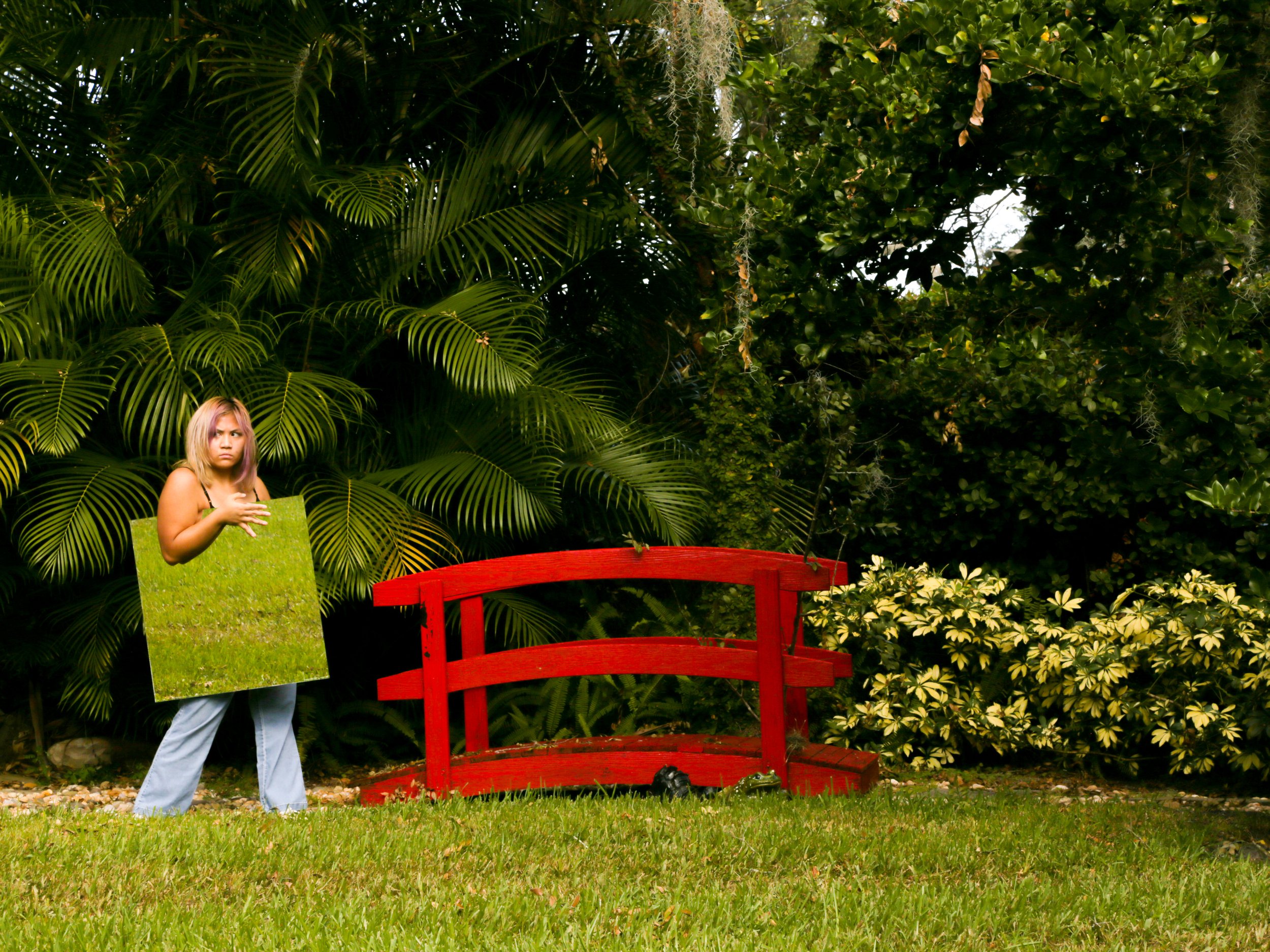
2020, Digital Photo
As a reference to the popular sandbox game Minecraft, the artist uses a mirror and physical landscape to mesh our reality with the digital world of Minecraft. During the COVID-19 lockdown, the artist — like many — used the popular game and server platform to keep continuous virtual connections with her peers while isolated. For hours, she would be chatting with friends on a voice call traversing the terraformed terrain Mojang had given them. However, as with many things during the pandemic, this means of escape eventually became a source of longing, a reminder that this distant connection may be the closest friends can get within the foreseeable future.
In Minecraft, the Enderman is a type of “Mob”, or species of non-player character, in Minecraft. They appear throughout the in-game world as tall, dark figures with glowing eyes and have the ability to teleport from place to place. Despite its ominous appearance and mystical abilities, however, the creature itself is neutral in behavior, leisurely traveling, picking up blocks, teleporting around things that can harm them, and only attacking when attacked or looked in the eye for too long. This behavior deeply resonated with the artist during lockdown: feeling like she was teleporting through time as she wove in and out of dissociative states, collecting chests of digital blocks as she talked to the disembodied voices of her friends through a headset, and when she accidentally looked at herself in the mirror for too long — the bleakness of her reality would come in for attack like a contemporary ouroboros.
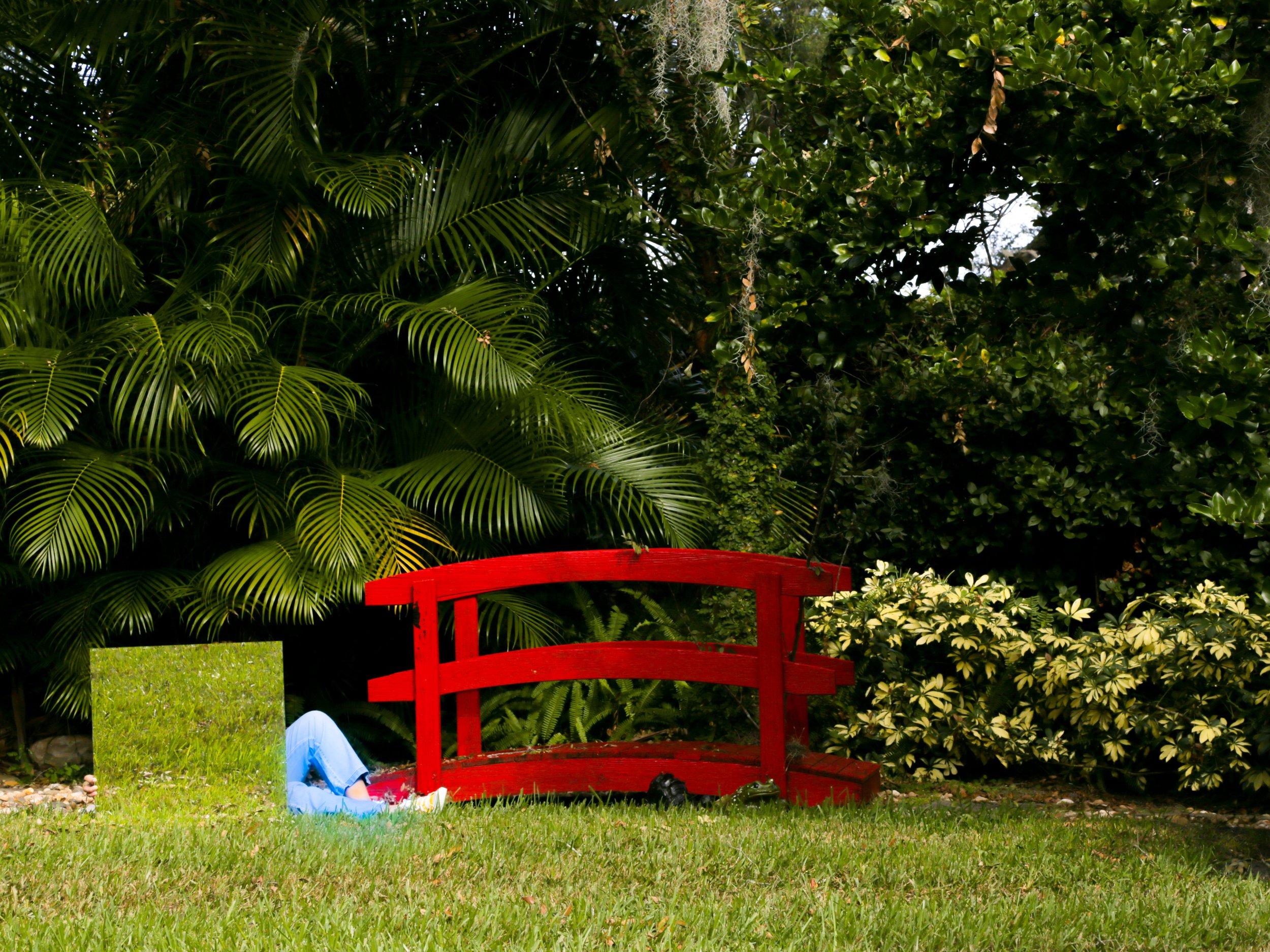
2020, Digital Photo
As a reference to the popular sandbox game Minecraft, the artist uses a mirror and physical landscape to mesh our reality with the digital world of Minecraft. During the COVID-19 lockdown, the artist — like many — used the popular game and server platform to keep continuous virtual connections with her peers while isolated. For hours, she would be chatting with friends on a voice call traversing the terraformed terrain Mojang had given them. However, as with many things during the pandemic, this means of escape eventually became a source of longing, a reminder that this distant connection may be the closest friends can get within the foreseeable future.
In Minecraft, the Enderman is a type of “Mob”, or species of non-player character, in Minecraft. They appear throughout the in-game world as tall, dark figures with glowing eyes and have the ability to teleport from place to place. Despite its ominous appearance and mystical abilities, however, the creature itself is neutral in behavior, leisurely traveling, picking up blocks, teleporting around things that can harm them, and only attacking when attacked or looked in the eye for too long. This behavior deeply resonated with the artist during lockdown: feeling like she was teleporting through time as she wove in and out of dissociative states, collecting chests of digital blocks as she talked to the disembodied voices of her friends through a headset, and when she accidentally looked at herself in the mirror for too long — the bleakness of her reality would come in for attack like a contemporary ouroboros.
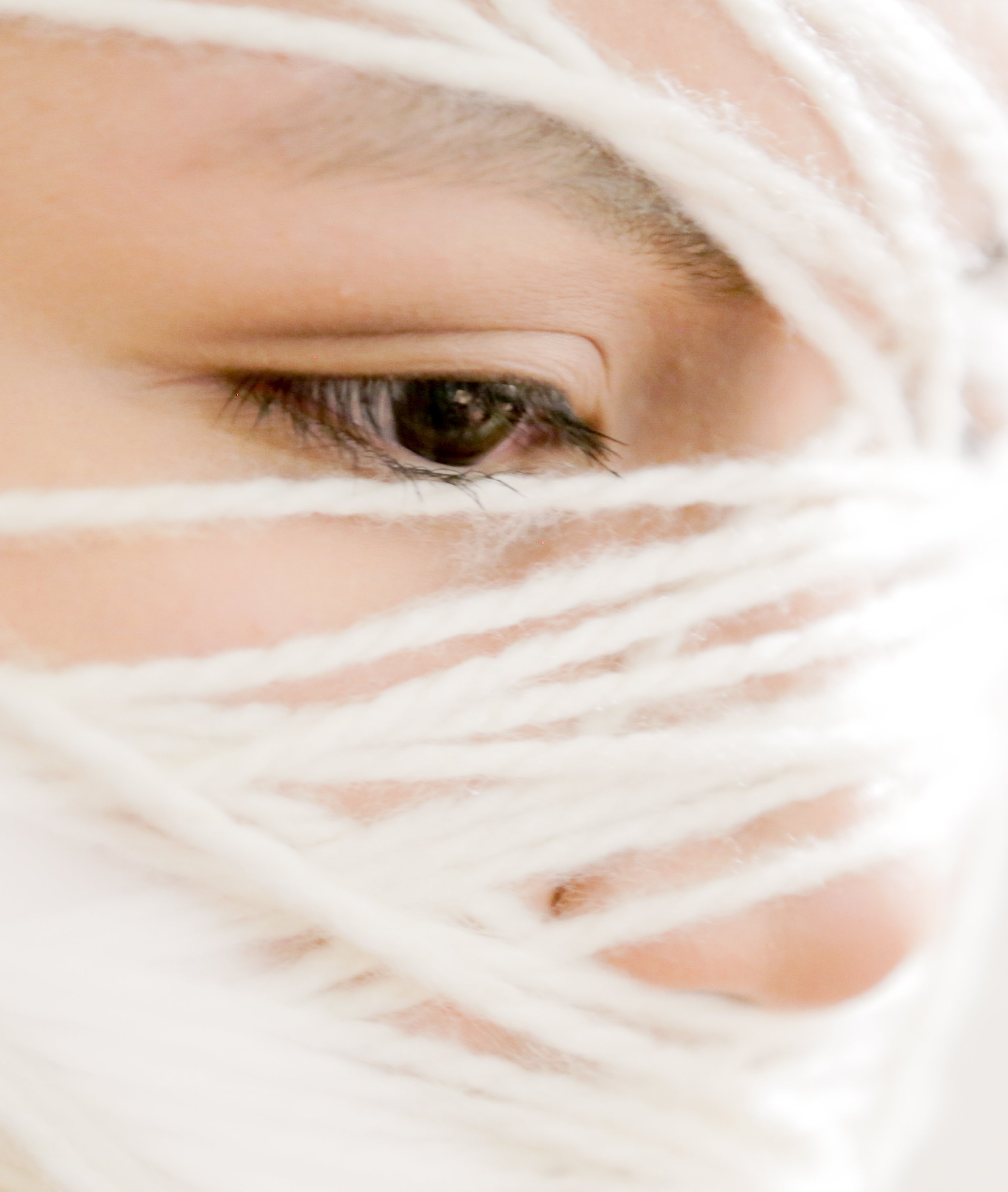
2020, Digital Photo
The title being a cheeky callback to a common phrase of advice given during lockdown, the artist becomes physically consumed by the yarn of one of the dozen crochet projects she was working on to keep busy.
As the series progresses, the yarn tightens and bites into the subject skin. The subject’s gaze turns from bargaining to acceptance. The yarn transforms from a craft material into the classical symbol of life force: the thread of time at the hands of fate.
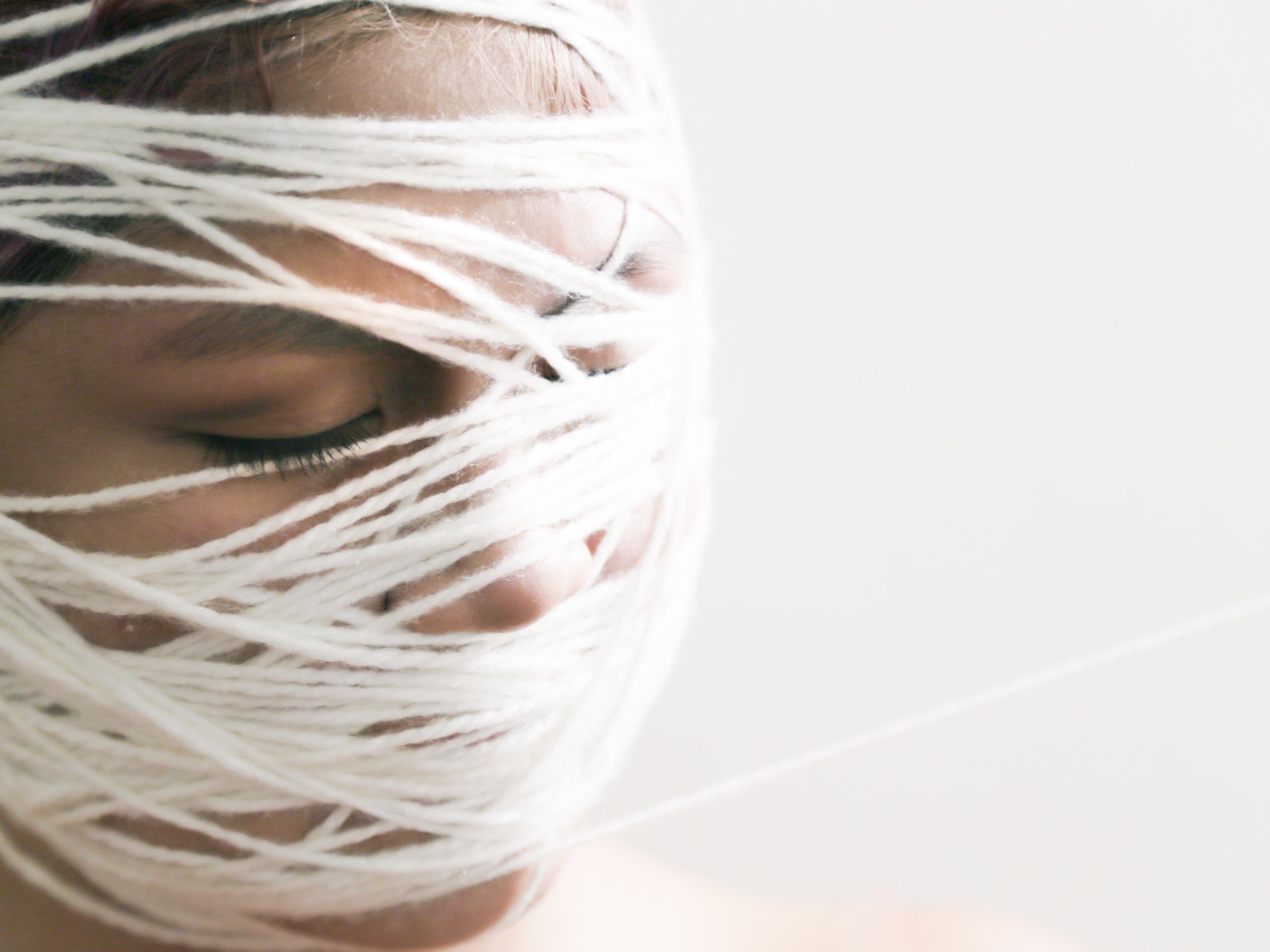
2020, Digital Photo
The title being a cheeky callback to a common phrase of advice given during lockdown, the artist becomes physically consumed by the yarn of one of the dozen crochet projects she was working on to keep busy.
As the series progresses, the yarn tightens and bites into the subject skin. The subject’s gaze turns from bargaining to acceptance. The yarn transforms from a craft material into the classical symbol of life force: the thread of time at the hands of fate.

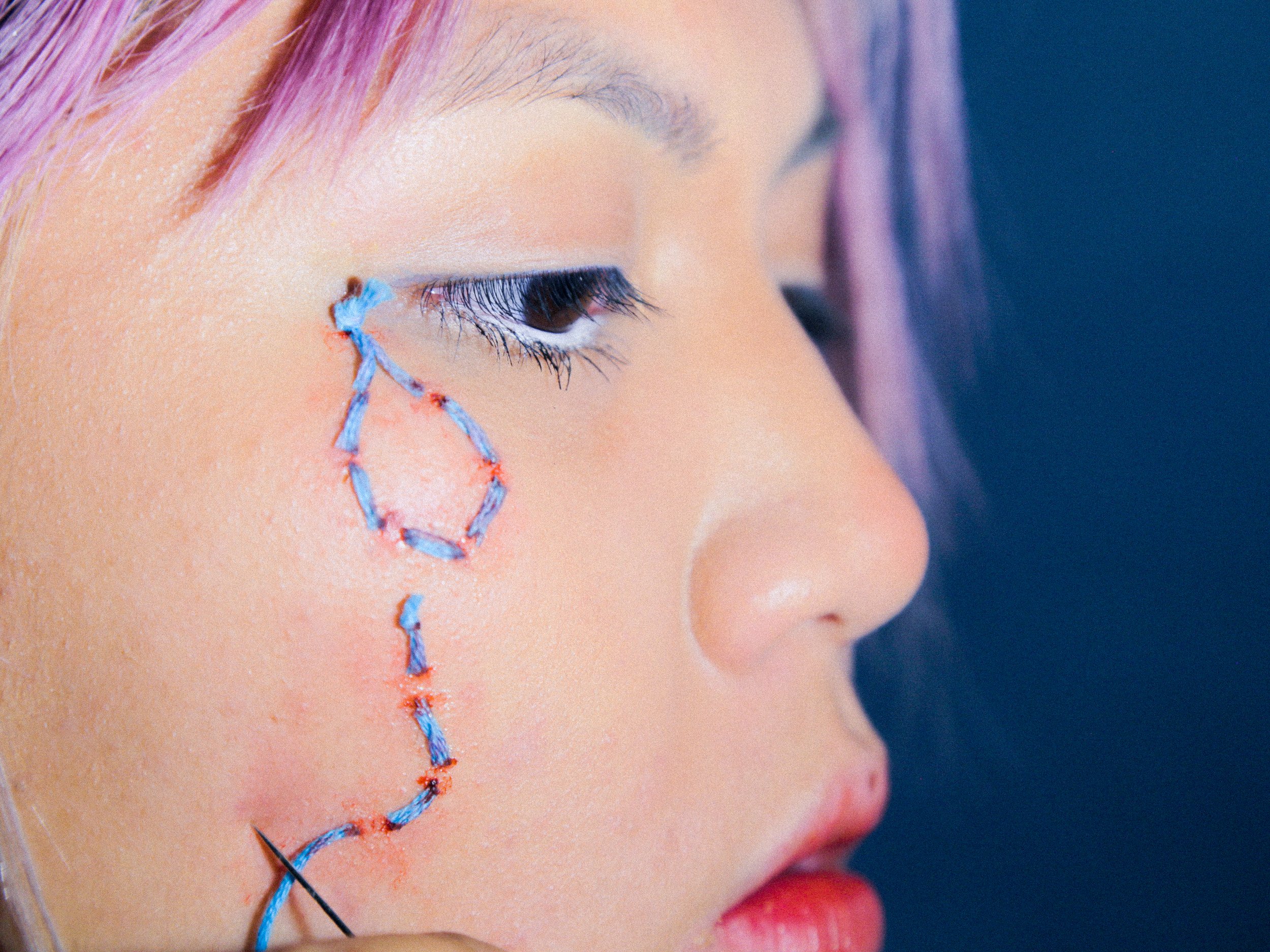
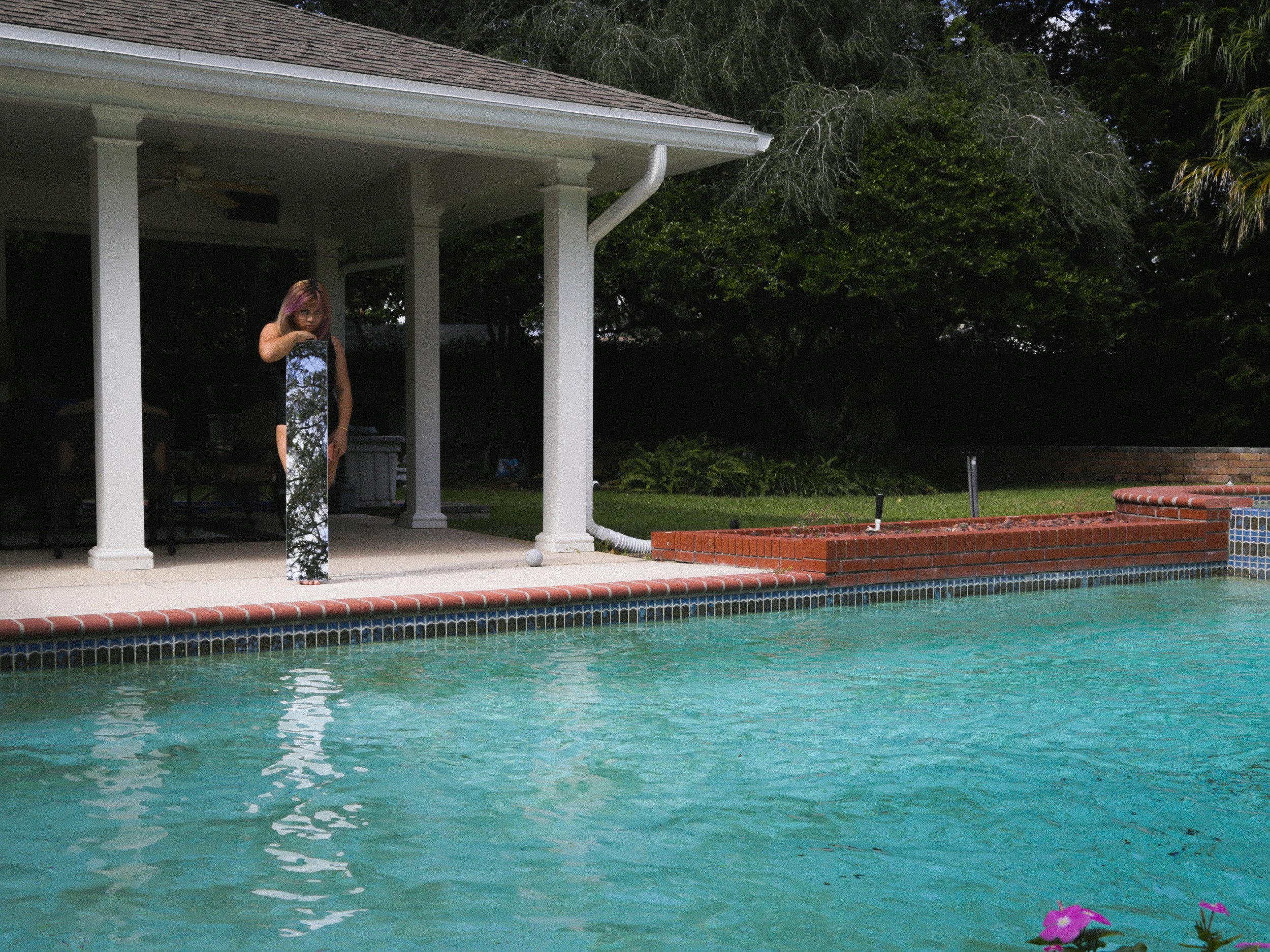
2020, Digital Photo

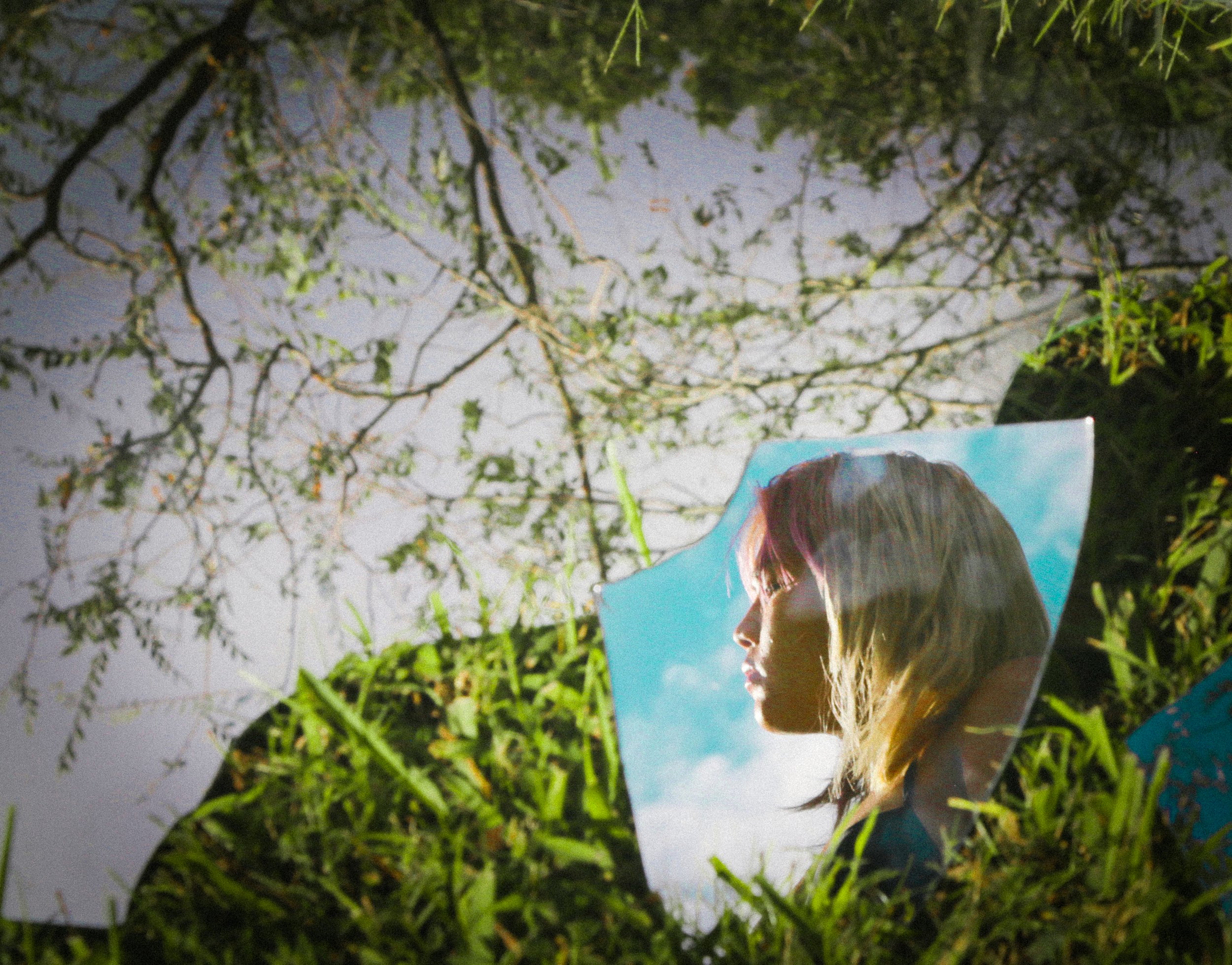
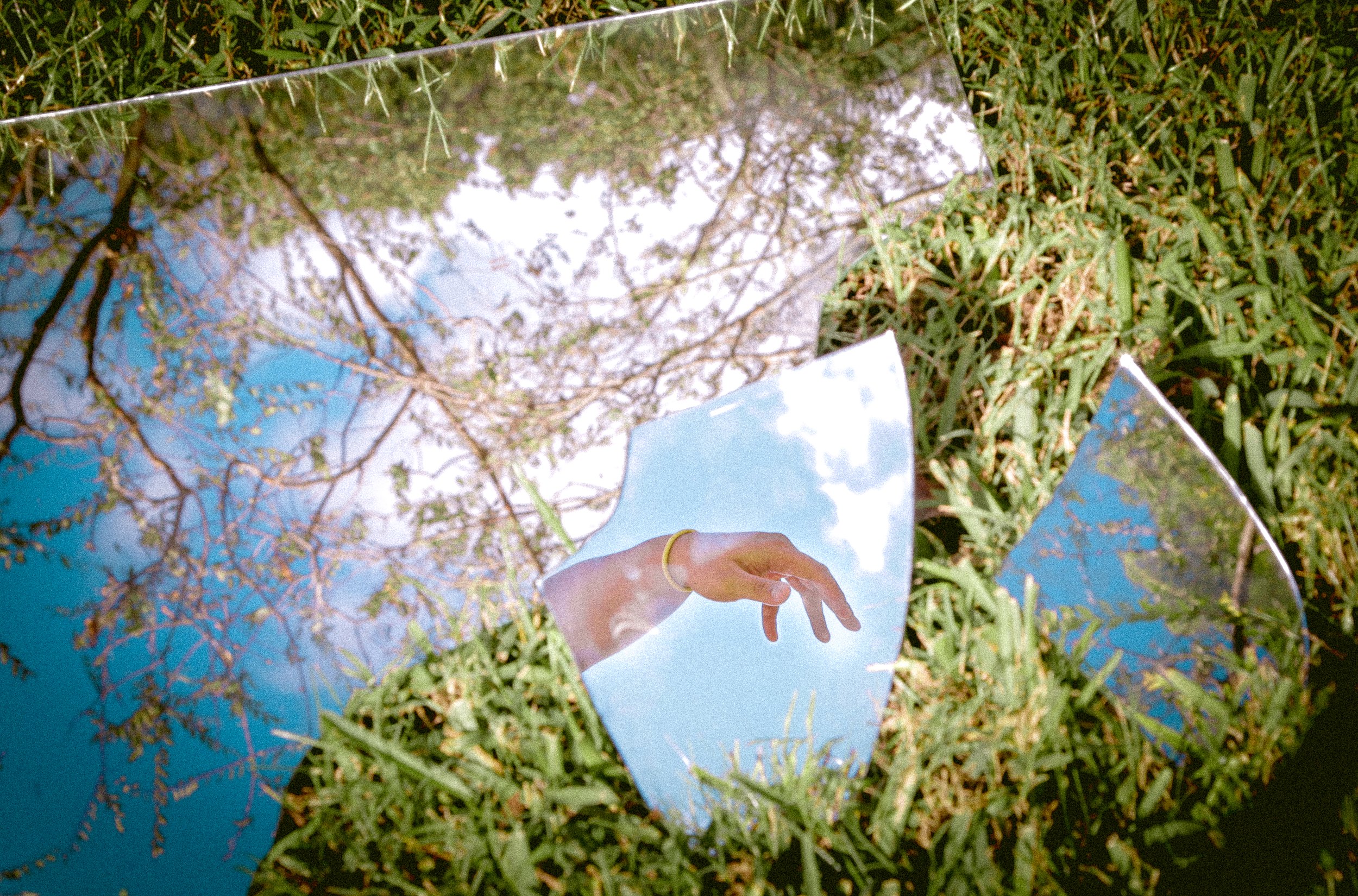










Today in Visual History (2019)
(Digital Photo Series)
I focused on connecting the past with the modern day. Employing the visual language of cinema from multiple post-war eras and movements, I want to show how the human reaction to mass devastation and sociopolitical unrest transcends time, background, and nationality. This series of diptychs and triptychs compare the issues of the modern day to different post-war eras via the visual and conceptual cinematic conventions from each period.
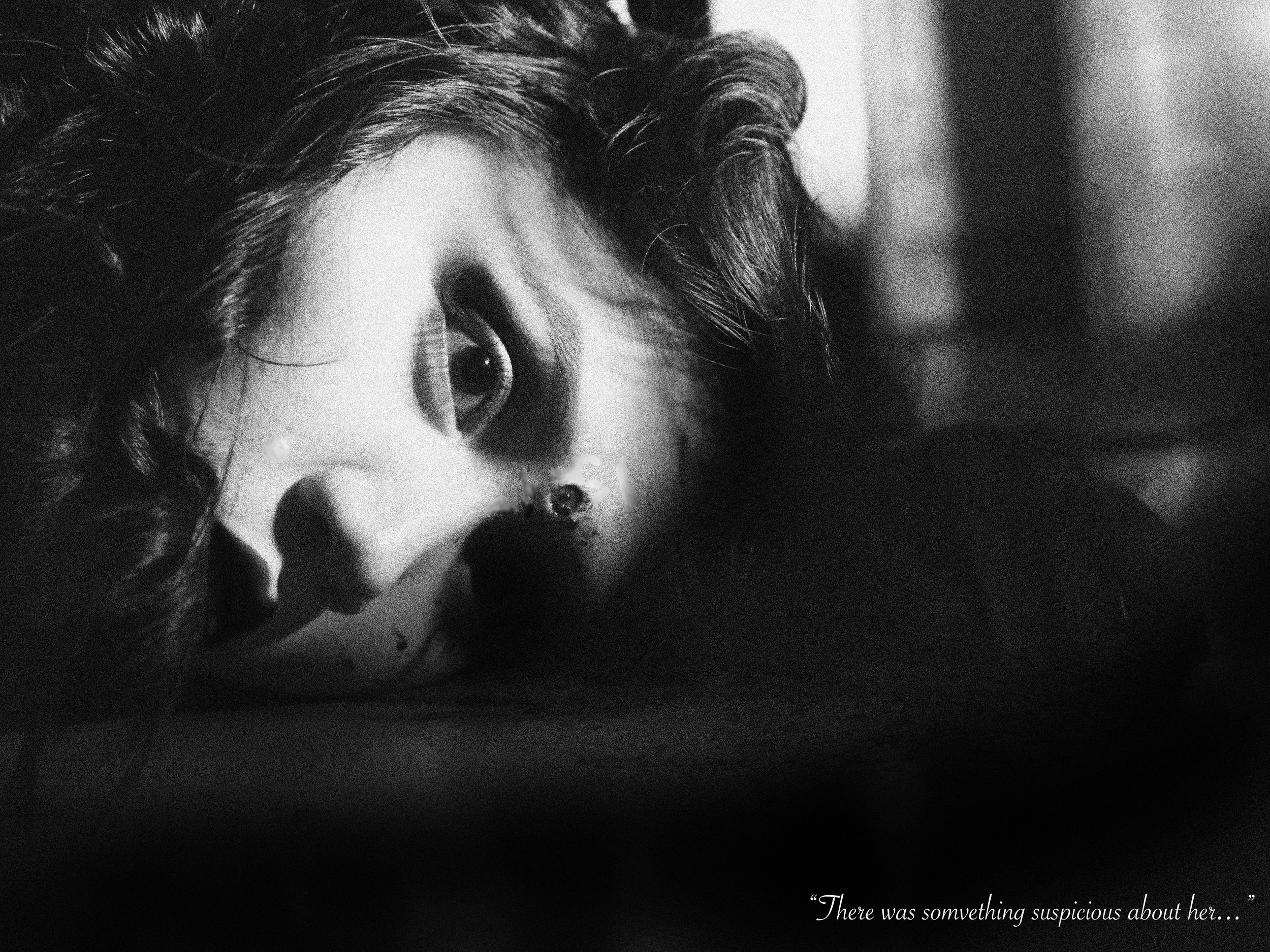
2019. Digital Photo.
Using the conventions of film noir, I wanted to draw attention to the issue of gun violence and the lack of gun control in the US. I found that the themes characteristic of noir films — such as predetermined or unchangeable fate and moral ambiguity (i.e. evil prevails over good) — related heavily to the firearm issue in America. The morality and internal and external biases of those in power — politicians, government, and law enforcement officials who have the power to decide one’s fate or have the power to prevent future shootings from occurring — have been skewed by greed and bribery from privately funded political action committees like the NRA. As the name of this piece suggests, I chose to subvert the image of the femme fatale — a character archetype that is definitive of the noir genre — to show that the real danger in our modern society is not the “mysterious” victim, but rather the faceless corrupt people in power. In the image, a woman is dead in the foreground, and the silhouettes of two people in suits discuss the reason for the woman’s murder. This image and dialogue are meant to draw attention to the excuses given by these powerful bodies as to why — despite the amount of historical violence toward Black and Brown people at the hands of police as well as the rise in mass shootings in recent years — the country has made little legislative progress pertaining to the issue of gun control.

2019. Triptych. Digital Photo.
Ich Auch, or “Me Too” in German, is representative of the Me Too movement. Many people involved with the movement -- especially those who have been victims of sexual assault or violence -- have been criticized for keeping their silence for such a prolonged period of time; this piece is a response to this criticism. Through the conventions of German Expressionism, I decided to show the female's perspective of the issue (i.e., an inside look at the issue) as a response to this critique. A key characteristic of German Expressionism is the idea of visually conveying a character’s inner turmoil; I felt this characteristic was fitting for the subject of the Me Too movement. From the knowledge I have collected through speaking to and reading the stories of sexual assault survivors, I have collected that a lot of women chose not to speak up previous to the movement because it was not worth reliving their trauma if it was likely that no one would believe them, the threat of victim blaming and the publicizing of this event could negatively affect their livelihood, justice would most likely not be served for their efforts. To convey this idea, I chose to depict a female character with her mouth sewn shut, trying to gain the courage to cut the stitches from her lips; as she goes to cut her stitches, she freezes while looking at the audience. This is meant to show how the gaze and judgment of the audience are what is deterring her from freeing her voice.
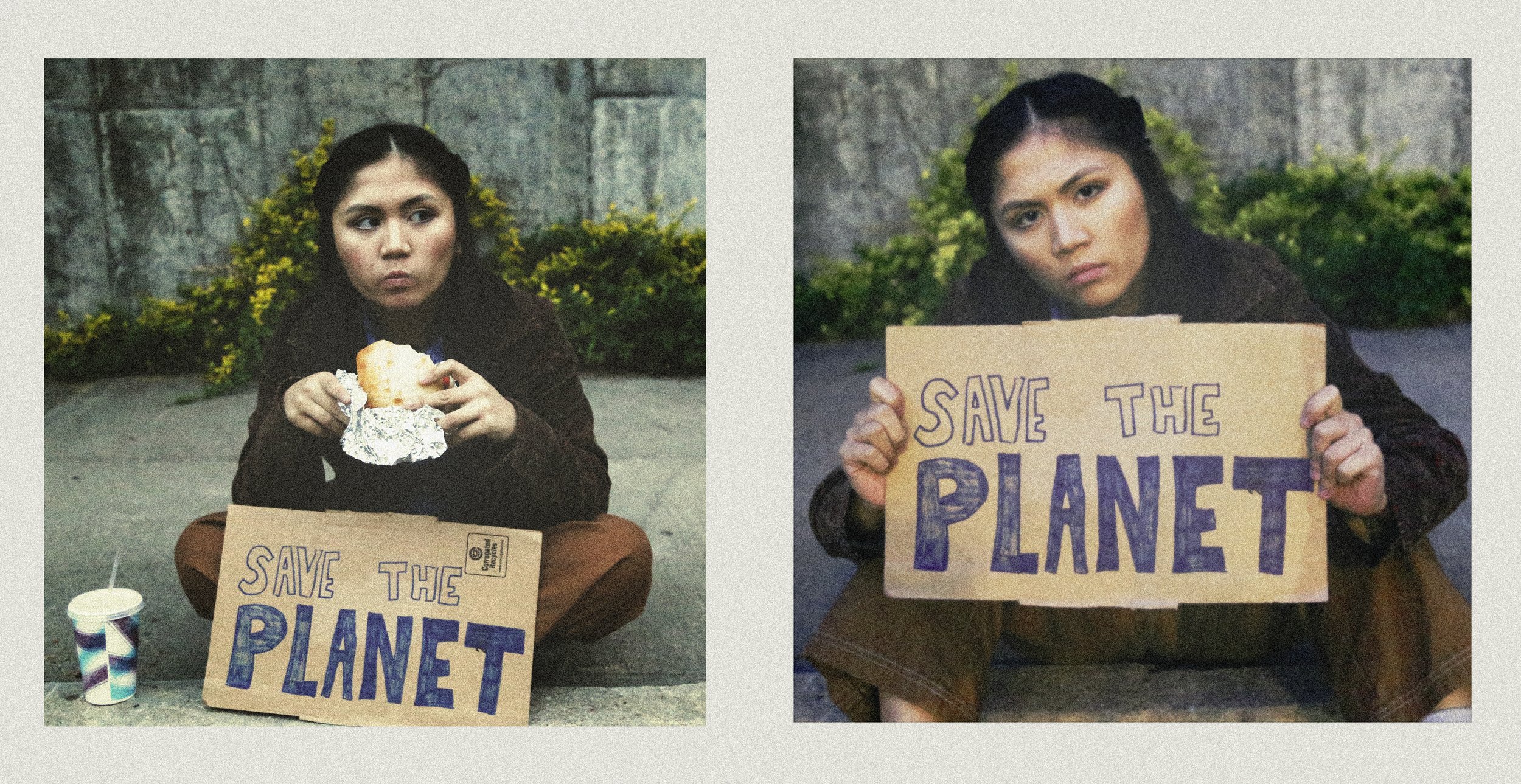
2019. Diptych. Digital Photo.
This piece uses the cinematic conventions of 1970s Vietnam War-era American Cinema to highlight the issues within modern activism during the technological age. In cinema history, the 1970s was a departure from the previous decade in the sense that the majority of people did not assemble to make change; they simply complained about the many present-day issues and made little to no effort to enact change. I felt this idea paralleled the recently coined term “performative activism.” Though there are many effective and empowering activists of this generation who are working to make real changes in society, there is still a large majority of people who use activism as a fleeting trend. They show up to single rallies and pose their support for various causes to gratify their own egos (i.e. feeling good about themselves or gaining positive responses from people on social media), but their efforts for change dwindle as the trend cycle progresses and the issue remains almost exactly as it did when the movement started.
Though this phenomenon reigns true for all contemporary issues (e.g. war, racial injustice, socioeconomic inequality, housing insecurity, etc.), this photo, in particular focuses on false activism within the environmental activism space. Since the issue is so broad and seemingly out of control due to neglect, many people who do believe that climate change is an issue also do little to nothing to reduce their personal contribution to the issue (i.e. reduce waste, reduce carbon emissions, properly recycle, etc.). I decided to convey this idea through a diptych: in the first image, the person is posing strongly for their audience to make a stance on saving the planet; however, in the second image, the person is seen, seemingly caught off guard, using a disposable cup and eating a sandwich with a disposable wrapper. This juxtaposition is meant to show the difference between how the audience is meant to see this character (as the strong, resilient activist) and the reality of who the character actually is.
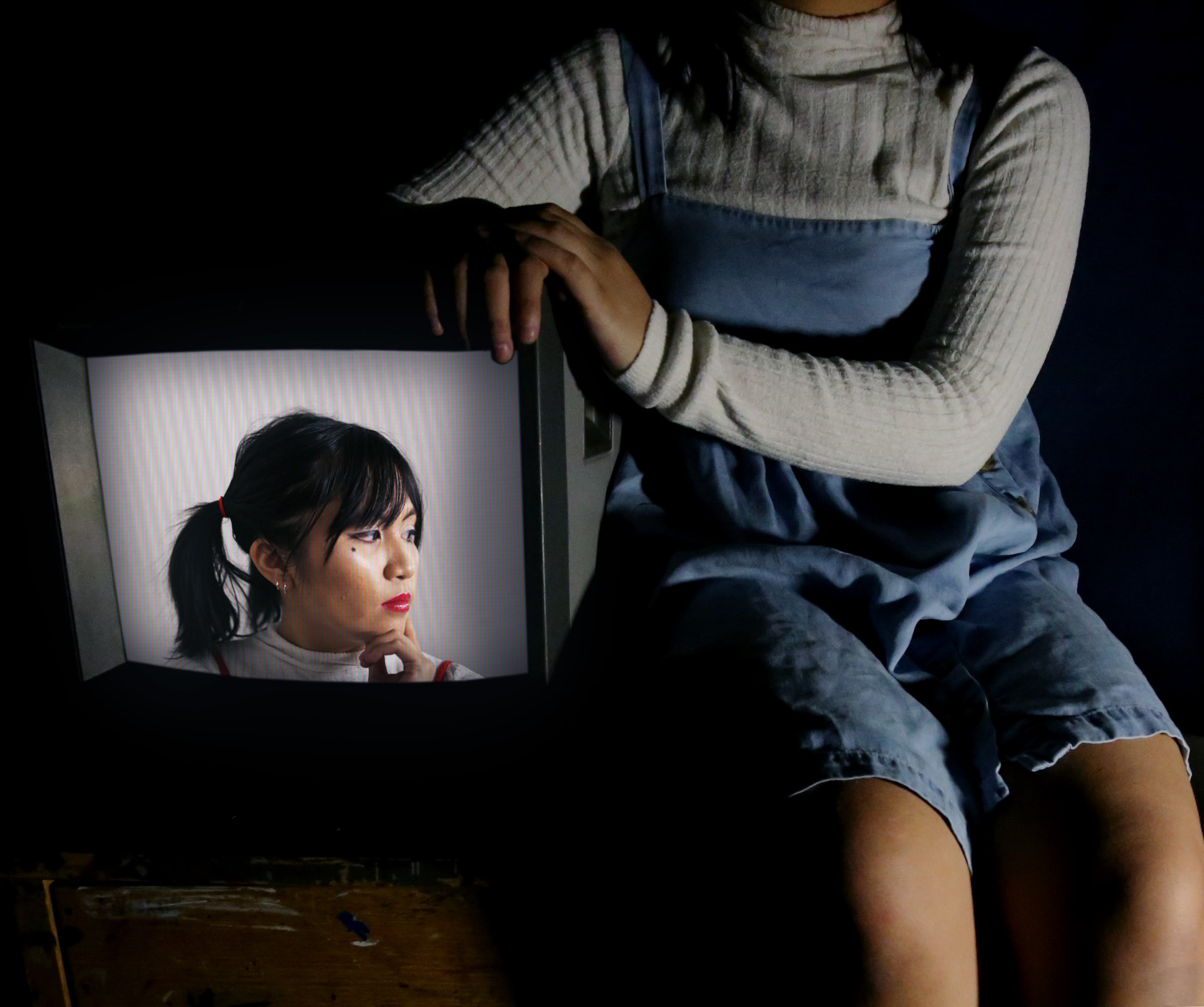
2019. Digital Photo.
As Kenneth Clark stated in his article for The Burlington Magazine, Da Vinci depicts“a beauty wrought out from within upon the flesh” in the Mona Lisa through his realistic treatment of the female figure in this completely fantastical or made up setting. This idea of expressing the internal externally was the main idea behind my piece. In this self portrait, I wanted to express “the quality of inner life” by creating a visual comparison between how I view myself and how others view me.
To express this “quality of inner life,” I used the two depictions of myself within the portrait. The figure set in “reality” -- the headless figure leaning on the TV -- is meant to represent how others see me, whereas the figure inside of the television is meant to express how I view myself. To strangers, I am average. My face is easily overlooked and is eventually forgotten by the common passer-by. However, once one takes the time to get to know me and explores my “inner life”, I become much more interesting. To convey these ideas, I chose to depict my external self as a faceless/headless figure with limited similarities to the Mona Lisa, and depict my internal self in a way that is more similar or characteristic of the Mona Lisa. In the internal pose on the television, I chose to depict myself in the same ¾ profile pose, ambiguous expression, and veil inspired by the Mona Lisa. Through this, I aimed to show that my “inner life” is “unique” like the Mona Lisa. Conversely, in the external pose, all aspects of my pose are dissimilar from the Mona Lisa except for the hands. I decided to keep aspects of the Mona Lisa within the external version of myself to convey to the viewer that these two people are more alike than different. Though the unique quality of the Mona Lisa is more subtle in the outward appearance, it is present nonetheless.
Moreover, I used this piece to deliver a commentary on how the cinematic medium, by nature, is both timeless and absolute. When reading the Kenneth Clark article, one quote he cited from Theophile Gautier, 1859 stood out:
Beneath the form expressed one feels a thought that is vague, infinite, and inexpressible. One is moved, troubled, images already seen pass before one’s eyes, voices whose notes seem familiar whispers… repressed desires, hopes that drive to despair stir painfully. There, for the first time, is our own, our very own, Mona Lisa
From this description of the Mona Lisa, I couldn’t help but draw similarities between Da Vinci’s painting and film/television. Alike to the Mona Lisa, the audio-visual medium aims to express a fictional image while maintaining a certain degree of verisimilitude in order for the audience to connect with the story and its characters.I felt the image of the television was a perfect way to represent my own inner life because, as a filmmaker, the films and videos I produce are my way of showing others how I view myself and the world around me at a single moment. However, since films from the past have become so accessible in the modern age, the video medium has become a sort of timeless snapshot since it allows people to experience the past as the present, to a certain extent. When watching classic films from the past -- like the films of Charlie Chaplain or films like The Wizard of Oz -- the gap between the people of the modern age and the times before begins to close; people today are still able to empathize and relate to the experiences of people from the past because of film’s appeal to people’s empathy through the film’s narrative. In this sense, I feel my piece captures both the single moment of my emotions, as well as the timelessness of them. In my photograph, I chose to juxtapose the timeless pose and emotionally ambiguous expression of the Mona Lisa with modern clothing and makeup. Through this, I am expressing the idea that films, though capturing a specific moment in time, have the potential to be timeless since the core of human emotion has yet to drastically change from the people of now and the people of the past; the basic emotions -- as conveyed through the films of others and my own films -- have the potential to stand the test of time since the medium is meant to manipulate the viewer into empathizing with the piece.



